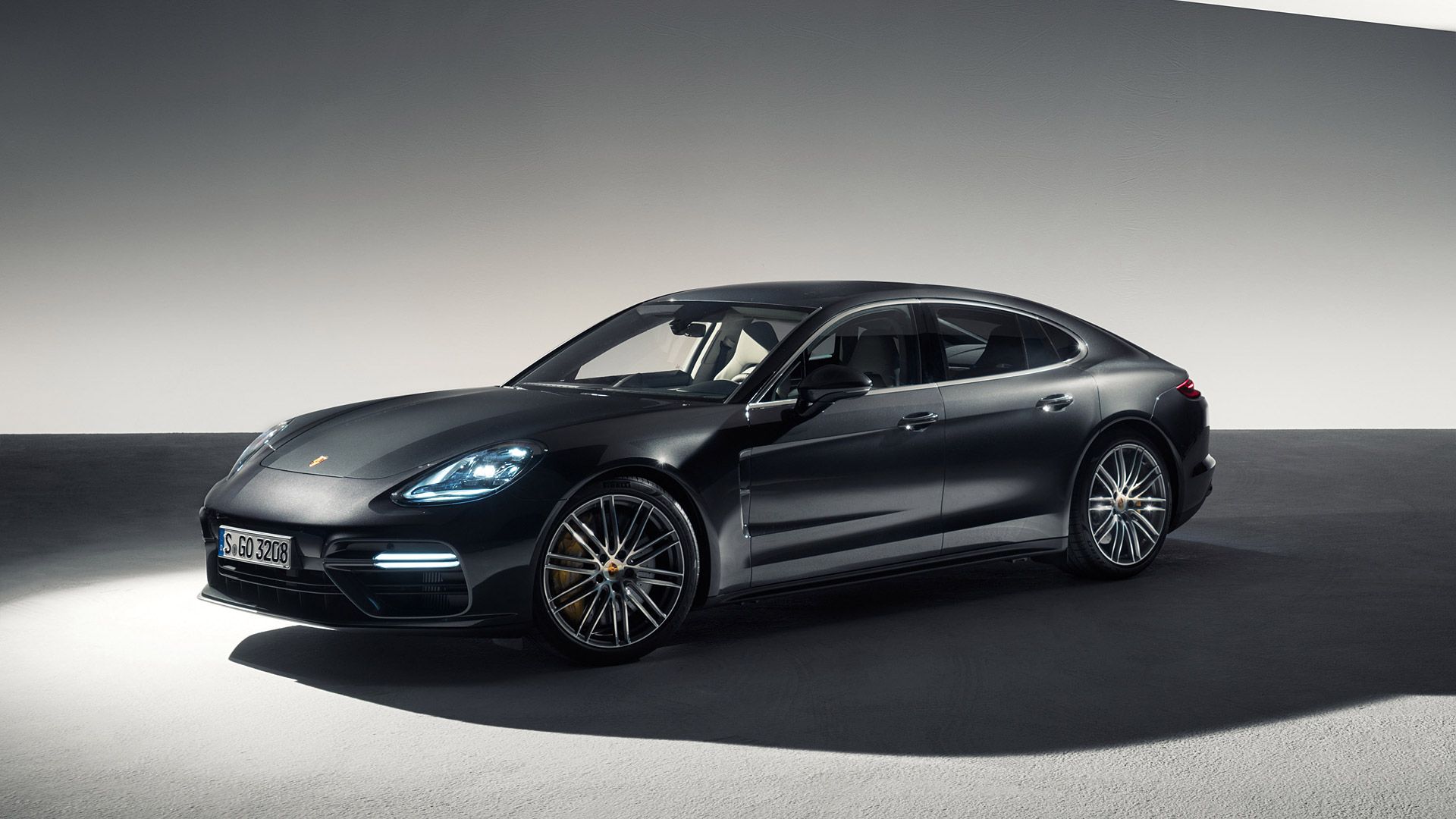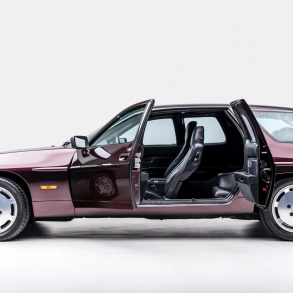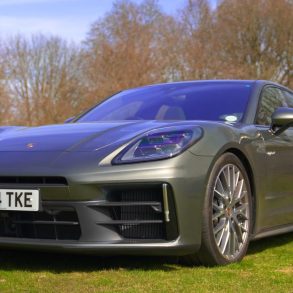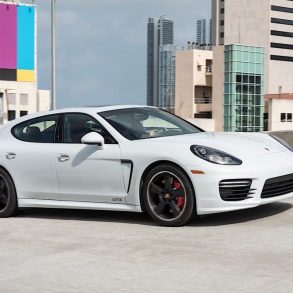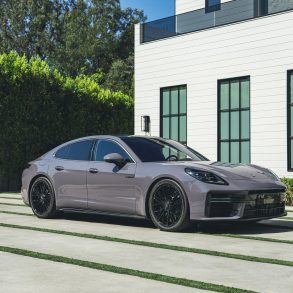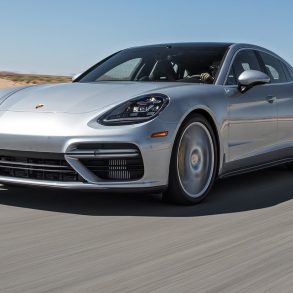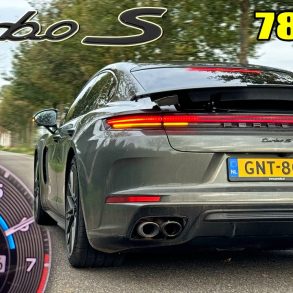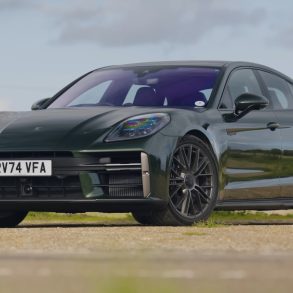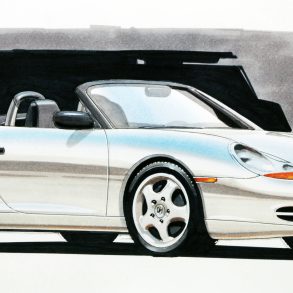1st Generation Porsche Panamera (970.2) Story & History
Panamera (2014 – 2016)
Official photos: 2016 June 28 / Premiere: for press on 2016 June 28 in Berlin / Market launch: 2016 November 5
The body
The interior design was top class already in the original Panamera (970) and it was enhanced for the 971, but the exterior design is where the 971 stands out – and not only because the original Panamera had a hump on the back. The Panamera 971 short wheelbase sedan is 198.8″/5049 mm long (+1.3″/34 mm), 76.2″/1937 mm wide (+0.2″/6 mm) and 56.0″/1423 mm tall (+0.2″/5 mm). Making it taller helped to cure away the hump. The wheelbase was increased by 1.2″/30 mm to 116.1″/2950 mm. With use of more aluminium, the body weight of the 970 generation could be maintained. The rear doors of the long wheelbase (LWB) Executive versions are 5.9″/150 mm longer than on the short wheelbase (SWB) versions. The new body style is the station wagon called Sport Turismo.


Sport Turismo’s moving roof spoiler is a world first
The angle of the roof spoiler is set in 3 stages depending on the driving situation and selected vehicle settings, and generates an additional downforce of up to 50 kg/110 lb on the rear axle. Up to a speed of 105 mph/170 km/h, the aerodynamic guide element of the PAA Porsche Active Aerodynamics stays in its retracted position with an angle of -7 degrees, which reduces drag and thus optimises fuel consumption (CO2). Above 105 mph/170 km/h, the roof spoiler automatically moves to the performance position with an angle of +1 degree, thereby increasing driving stability and lateral dynamics. When in the Sport and Sport Plus driving modes, the roof spoiler automatically moves to the performance position at speeds of 55 mph/90 km/h upwards. When the panoramic sliding roof is open at a speed of 55 mph/90 km/h or higher, the Porsche Active Aerodynamics system adapts the roof spoiler’s angle of inclination to +26 degrees to minimise wind noise.
The drivetrain and the chassis
To reduce CO2 emissions, for the first time the PDK double-clutch automatic gearbox has 8 speeds. The top speed is still reached in the 6th gear. The 4WD system is not providing permanent mechanical 4-wheel-drive, it is controlled electronically – if the rear wheels threaten to spin under acceleration, a greater proportion of drive force is distributed to the front by a more powerful engagement of the multi-plate clutch.
New PDCCS Porsche Dynamic Chassis Control Sport and PTV+ Porsche Torque Vectoring Plus enhance driving dynamics and stability. The active anti-roll stabilization system is now electromechanical. The earlier hydraulic system required a permanently powered pump and therefore used more energy than does the new electromechanical solution which is active only when needed. Electric system is also faster. As a function of steering angle, steering speed, accelerator pedal position, yaw rate and vehicle speed, PTV+ improves steering response and precision by strategic braking of one of the rear wheels. At high speeds and when accelerating out of corners, the electronically controlled rear differential lock with fully variable torque distribution also acts to provide greater driving stability and traction.
For the 971 generation Panamera, the rear axle steering was made available. During low-speed manoeuvres, the system steers the rear wheels in the opposite direction to that of the front wheels and makes parking easier. During high-speed manoeuvres, the system steers the rear wheels in the same direction as the front wheels.
In the Panamera 970 even the air suspension was too sporty (too stiff), so, a new air suspension with 3-chamber technology using 60% more air was constructed. New is also the Porsche 4D Chassis Control which networks all control units that are relevant to the chassis with one another and optimises comfort.
New and enhanced features
* Panoramic roof (standard on long wheelbase versions)
* Massage function for the seats, front and rear, with 5 programmes and 5 intensity levels. 10 air cushions in the backrest provide a relaxing treat anytime you choose, and not only during the long drives.
* Night Vision Assist provides the driver with information even beyond the range of the headlights. An infrared camera detects pedestrians or large wildlife before they are illuminated by the headlights. A thermal image in the instrument cluster warns the driver: the detected person or animal is highlighted in yellow – or in red and accompanied by an audible signal if within the critical range in front of the car. In combination with PDLS+ Porsche Dynamic Light System Plus, the marker light function briefly flashes the headlight at the pedestrian on the kerbside or in the carriageway three times to alert the driver’s attention.
* Sport Response button on the mode-switch on the steering wheel for easy overtaking. The mode-switch comes with the Sport Chrono package.
* Porsche Advanced Cockpit operating and display concept: in addition to the 12″ display, the centre console with Direct Touch Control has a surface in glass look featuring touch-sensitive buttons. Even the louvres of the central air vent are electrically adjusted by touch-sensitive sliders.
* LED Matrix headlights: the matrix beam strategically deactivates specific segments of the permanent main-beam cone. 84 individually controlled LEDs adapt to the situation ahead by switching off or dimming accordingly. Vehicles in front or in the oncoming lane are no longer dazzled, while the areas in between and to the side continue to receive full illumination. To optimise target fixation, not only are the lights selectively dimmed to fade out oncoming vehicles, the area to the right of the light void is lit more brightly for better guidance of the driver’s visual attention.
* Surround View system supplements the reversing camera with three more high-resolution cameras – one in the front apron and others under exterior mirrors. Based on the video from all 4 cameras, the system generates a virtual bird’s eye view of the car and displays it on the screen. It is also possible to switch between various camera views to improve visibility, e.g. at narrow exits.
* Lane Keeping Assist is a camera-based system for automatic detection of divider line markings on the road. The system eases the burden on the driver by providing steering assistance, helping to keep the vehicle in lane. Integrated traffic sign recognition uses a camera and navigation data to detect speed limits.
* Lane Change Assist uses radar sensors to monitor the areas to the rear of the vehicle and the blind spots on either side. During low-speed turns, new Turn Safety Assist improves safety at the rear. Once you’ve arrived at an intersection, Turn Assist issues a visual warning if it detects objects approaching in the blind spots behind your vehicle.
* Rear Seat Entertainment units are removable, making them convenient to use outside the vehicle, too.
* Porsche InnoDrive enhances adaptive cruise control and predictively optimises the speed. With the aid of navigation data and information supplied by the radar and video sensors, the system determines speed limits and topographical road features, such as gradients or corner radii, along your route even before you reach them – and modifies the gearshift strategy and speed of the Panamera accordingly. At speeds of up to 37 mph/60 km/h, the Traffic Jam Assist uses gentle steering inputs to keep the vehicle in the middle of the lane, regulates the distance from vehicles in front and follows the queue ahead where system limitations allow.
* Head-up display from 2019
The V6 engines
Audi V6 engines are used in the Panamera 971 – the 3.0-litre twin-scroll single turbo and the 2.9-litre twin-turbo unit depending on the market.
The V8 engines
With the Panamera 970.1 and 970.2 most of the engines were manufactured by Porsche in Stuttgart (except the Audi engines installed in the Panamera Diesel and Hybrid versions). The 4.0-litre V8 engines used in the Panamera 971 GTS and Turbo are built in a new factory in Stuttgart by Porsche, but these are Volkswagen Group engines, first used already in 2012.
The V8 engines have their hot sides inward, meaning the turbochargers are between the cylinder heads. The same idea – to have the headers between the V – was used for Porsche 918 Spyder (although it was normally aspirated). The 4.0 V8 is capable of switching off four cylinders and to become a 2.0 V4 to save a bit of fuel (CO2). At hard press of the throttle pedal the sleeping four cylinders awake in 0.3 seconds.
The 4.0 V8 “inward hot” bi-turbo engines have different outputs in different Volkswagen Group cars:
331 kW Audi S6 and S7
338 kW Porsche Panamera 971.1 GTS
353 kW Porsche Panamera 971.2 GTS
373 kW Bentley Continental GT/GTC V8 and Flying Spur V8
388 kW Bentley Continental GT/GTC V8 S and Flying Spur V8 S
404 kW Bentley Bentayga V8, Porsche Panamera 971 Turbo and Cayenne 9YA Turbo
412 kW Audi RS6 and RS7
445 kW Audi RS6 Performance, RS7 Performance and S8
463 kW Porsche Panamera 971 Turbo S (non-hybrid version)
478 kW Lamborghini Urus SUV
The GTS
It is the first time that the GTS is based on the Panamera Turbo. The 971 GTS has a heavily detuned 4.0 V8 bi-turbo engine. It is detuned by 66 kW compared to the same engine in the Panamera Turbo and has a whopping 140 kW less than the similar engine has when installed in the Lamborghini SUV. The GTS engine has a lot of potential – white smock tuners are rubbing hands!
The sports chassis of the GTS models is 0.4″/10 mm lower and the PASM Porsche Active Suspension Management has sportier calibration. The brakes are a solution between the base models and the Panamera Turbo – the front discs measure 390 mm and rear discs 365 mm. The GTS models are equipped with 20″ Panamera Design wheels, black exterior trim and black Alcantara interior. With the optional GTS interior package various design elements are customized, such as the rev counter, seams, and the stitched GTS logos in contrasting Carmine Red or Crayon. The GTS also comes with a feature new to the entire Panamera range – the head-up display.
While the first GTS Porsche was a 904 Carrera GTS supercar, the GTS version of the 924 was 55% more powerful than the 924 Turbo and the 928 GTS was the top of the line model, the GTS does not mark high-end models with 21st century Porsches. The GTS version came after the Panamera Turbo and the Turbo S which have respectively 66 kW and 162 kW more power and the press release said the Panamera GTS is an “extra sporty model”. Go figure. Despite the huge drop in power, the GTS emits similar amount of CO2 (23.5 kg/100 km) like the Turbo (23.8 kg/100 km) and 3 times more than the hybrid Turbo S.
Gran Turismo Sport Sport Turismo (no mistake here!)
The Panamera 971 GTS press release said “GTS stands for Gran Turismo Sport”, so, the station wagon version of the GTS is a Porsche Panamera Gran Turismo Sport Sport Turismo.
Diesel
The 971 generation Panamera was available only with V8 diesel and for a very short time. In spring of 2017 the Sport Turismo 4S Diesel was advertised to be launched by the end of the year, but before the series production started, it was decided to drop diesel engines for all Porsche models. V8 diesel-engined Sport Turismo press cars were made, but no production cars.
The Turbo S
In 2017, for the first time, the most powerful version, the Turbo S was a hybrid to show the future. The insane pack of the 4-litre twin turbo and the electric motor put out 500 kW of combined power. For the 2021 model year, the peak power of the Turbo S Hybrid was rised to 514 kW and a non-hybrid Turbo S with 463 kW was launched in parallel.
Evolution of the hybrid Panamera
| Launch | Gen. | Model | Plug-in | Electric range | CO2 | Gearbox | Drive | ICE | El.motor | Combined power | Acceleration | Vmax | DIN weight |
|---|---|---|---|---|---|---|---|---|---|---|---|---|---|
| 2011 | 970.1 | Panamera S Hybrid Supercharged 3.0 |
No | 1 mile 2 km |
16.7 kg/100 km | Tiptronic 8-speed |
RWD | Audi V6 245 kW 324 lb-ft 440 Nm |
34 kW 221 lb-ft 300 Nm |
279 kW 426 lb-ft 580 Nm |
5.7 sec.0-60 mph 6.0 sec. 0-100 km/h |
168 mph 270 km/h |
4365 lb 1980 kg |
| 2013 | 970.2 | Panamera S E-Hybrid Supercharged 3.0 |
Yes | 22 miles 36 km |
7.1 kg/100 km | Tiptronic 8-speed |
RWD | Audi V6 245 kW 324 lb-ft 440 Nm |
70 kW 228 lb-ft 310 Nm |
306 kW 434 lb-ft 590 Nm |
5.2 sec.0-60 mph 5.5 sec. 0-100 km/h |
168 mph 270 km/h |
4619 lb 2095 kg |
| 2016 | 971.1 | Panamera 4 E-Hybrid Turbo 2.9 |
Yes | 31 miles 50 km |
5.6 kg/100 km | PDK 8-speed |
4WD | Audi V6 243 kW 331 lb-ft 450 Nm |
100 kW 294 lb-ft 400 Nm |
340 kW 515 lb-ft 700 Nm |
4.4 sec.0-60 mph 4.6 sec. 0-100 km/h |
173 mph 278 km/h |
4784 lb 2170 kg |
| 2017 | 971.1 | Panamera Turbo S E-Hybrid Turbo 4.0 |
Yes | 31 miles 50 km |
6.6 kg/100 km | PDK 8-speed |
4WD | Audi-Porsche V8 404 kW 556 lb-ft 770 Nm |
100 kW 294 lb-ft 400 Nm |
500 kW 625 lb-ft 850 Nm |
3.2 sec.0-60 mph 3.4 sec. 0-100 km/h |
193 mph 310 km/h |
5093 lb 2310 kg |
| 2021 | 971.2 | Panamera Turbo S E-Hybrid Turbo 4.0 |
Yes | 36 miles 59 km |
6.2 kg/100 km | PDK 8-speed |
4WD | Audi-Porsche V8 420 kW lb-ft Nm |
100 kW 294 lb-ft 400 Nm |
514 kW lb-ft Nm |
3.0 sec.0-60 mph 3.2 sec. 0-100 km/h |
196 mph 315 km/h |
lb kg |
Looking at the tech specs of the three generations of the Panamera Hybrid, it is clear the first generation was far from tolerable – for its excessive body weight it had almost zero electric drive range. The most important feature of the electric-hybrid car is its all-electric range and that is a figure that has been improved considerably compared to the earlier generations. The battery has been increased from 1.7 kWh NiMH (970.1) to 9.4 kWh Li-ion (970.2) and then from 14.1 kWh (971.1) to 17.9 kWh (971.2). While the Panamera 970 hybrids were available only with 2-wheel-drive, the 971-generation hybrids are 4WD cars (both axles have drive from gearbox plus both axles have their own electric motor). The torque of the hybrid 971’s electric motor (294 lb-ft/400 Nm) is made available as soon as you touch the accelerator pedal (on 970 hybrid, the pedal needed to be pressed at least 80% of the way to unleash the additional power of the electric drive).
Driving modes:
E-Power: the car always starts in this purely electric mode
Hybrid Auto: the car changes and combines the drive sources automatically for ultimate efficiency
E-Hold: this mode allows drivers to consciously conserve the state of charge to enable them to switch to electric mode in an environmental zone at their destination
E-Charge: the battery is charged by the ICE (internal combustion engine) and to achieve this, the petrol engine generates more power than is actually needed for driving
The highest level of drive performance is made available in the “Sport” and “Sport Plus” modes. “Sport Plus” mode allows to reach the top speed. This mode also recharges the battery as quickly as possible with the help of the ICE.
The Panamera 4 E-Hybrid is 300 kg/661 lb heavier than the Panamera 4S with the same engine, gearbox and drive layout. The Panamera Turbo S e-hybrid is 140 kg/309 lb heavier than the Panamera 4 e-hybrid. The Panamera Turbo S Hybrid Executive is a whopping ~600 kg/1325 lb heavier than the basic Panamera. The heaviest versions have the rear wheel steering as standard to compensate the handling issues otherwise generated by the excessive weight. Cars that emit little or no CO2, save the planet for our kids, so every hybrid/electric car owner must be praised!
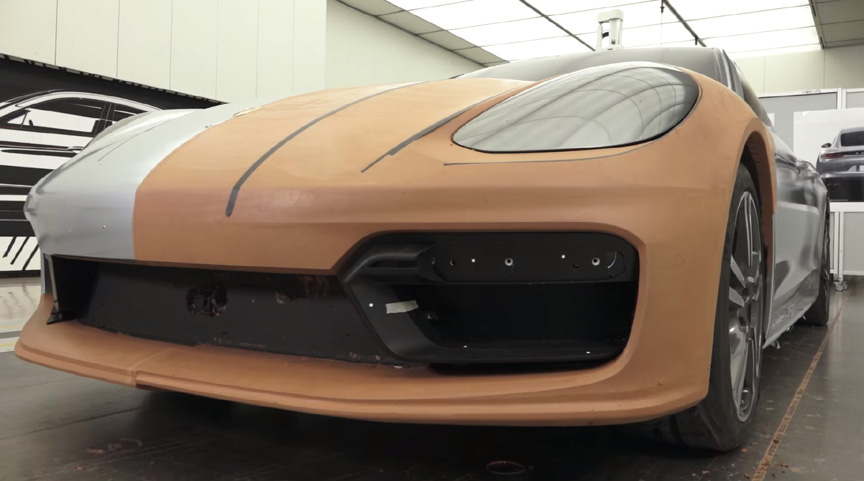
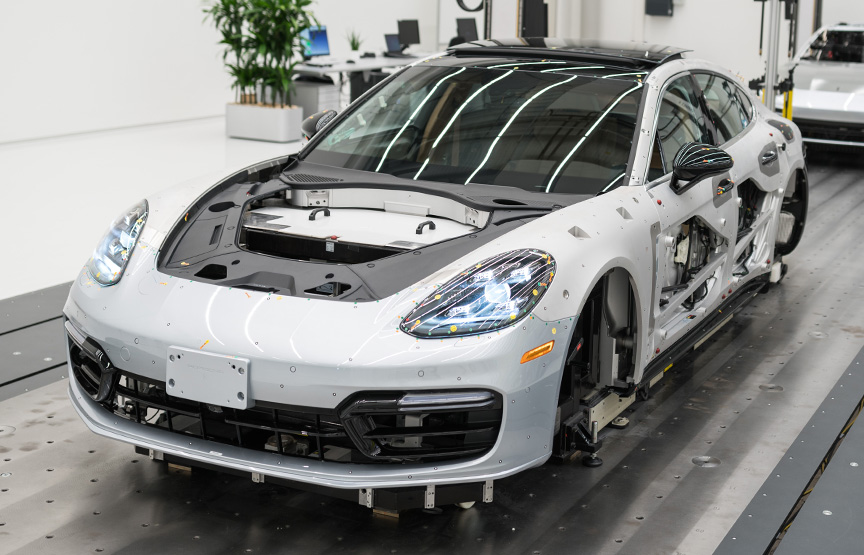
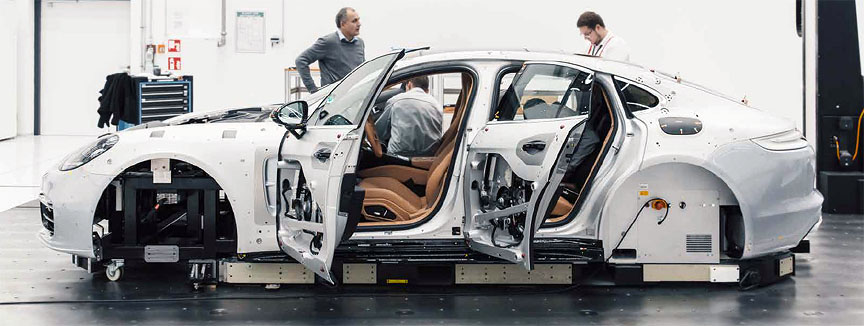
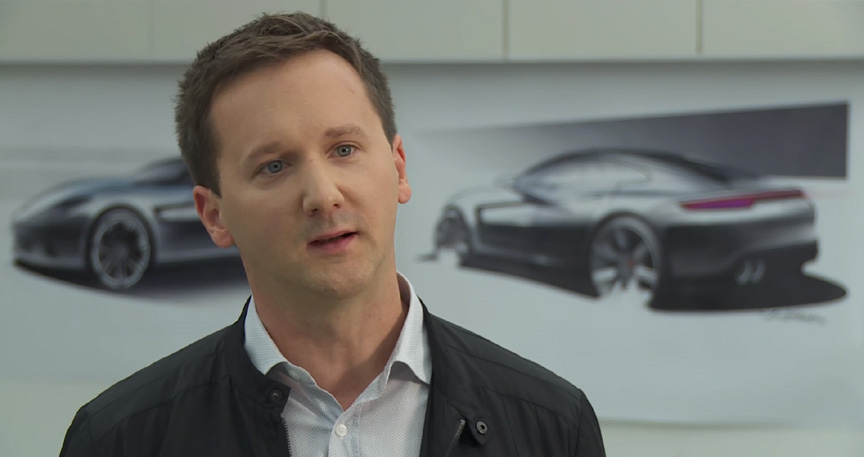

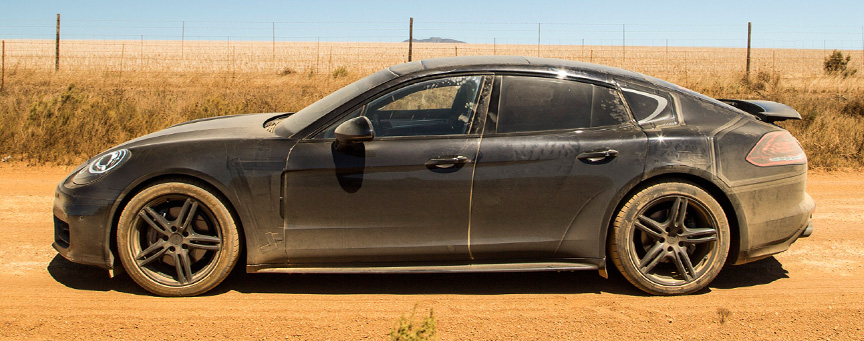
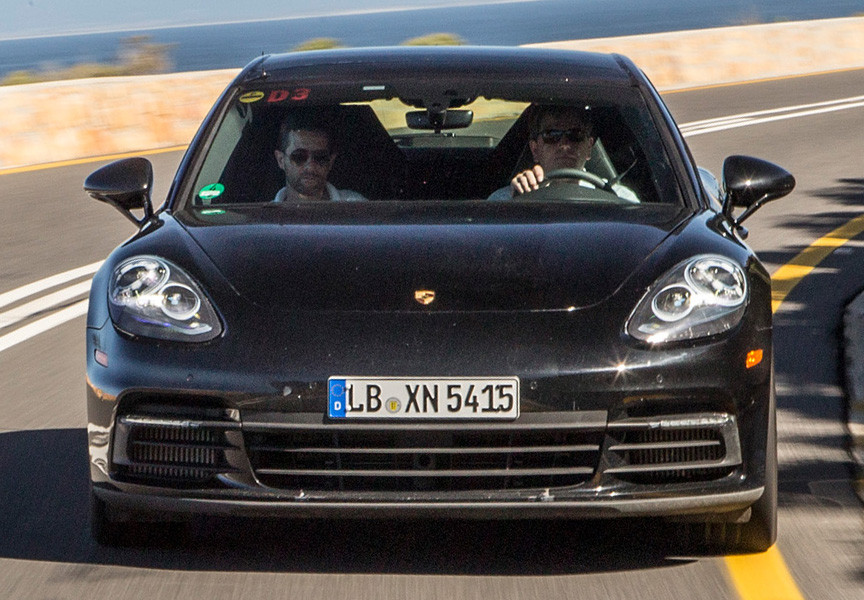
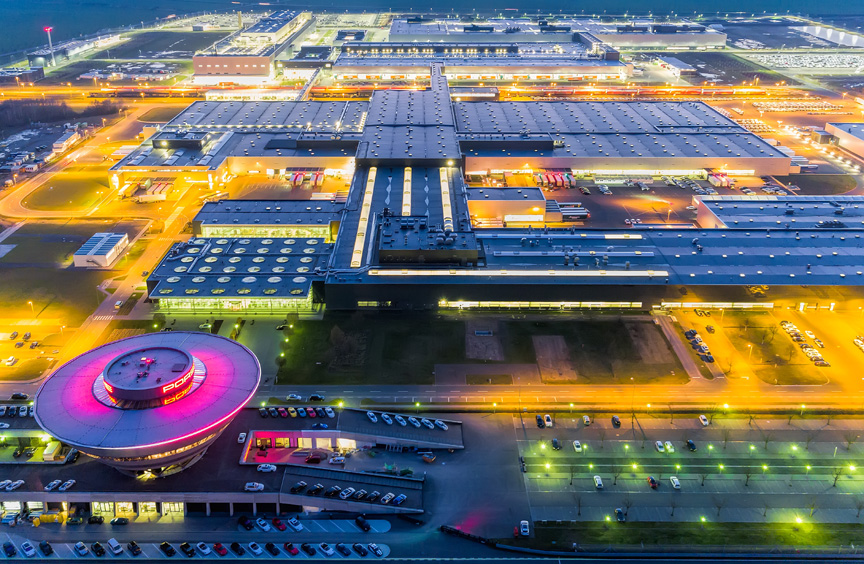
While the Panamera 970 bodies were manufactured and painted at the Volkswagen factory in Hanover (between 2009-2016), the Panamera 971 is fully produced at the factory in Leipzig.
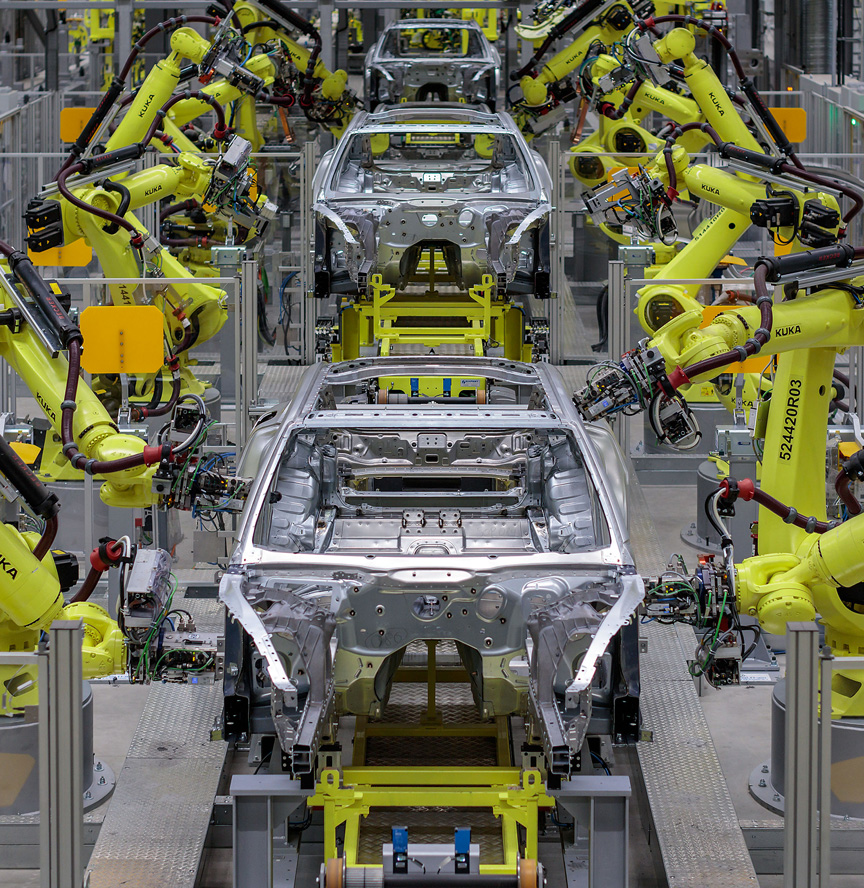
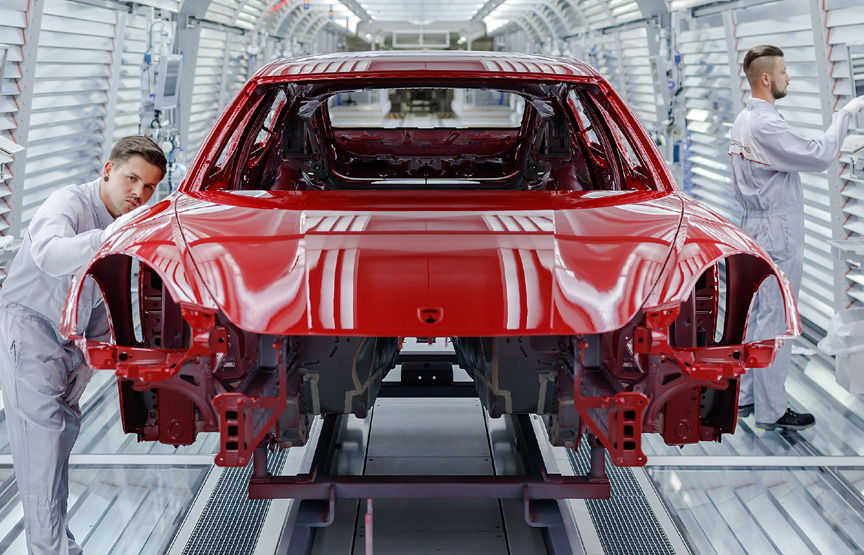
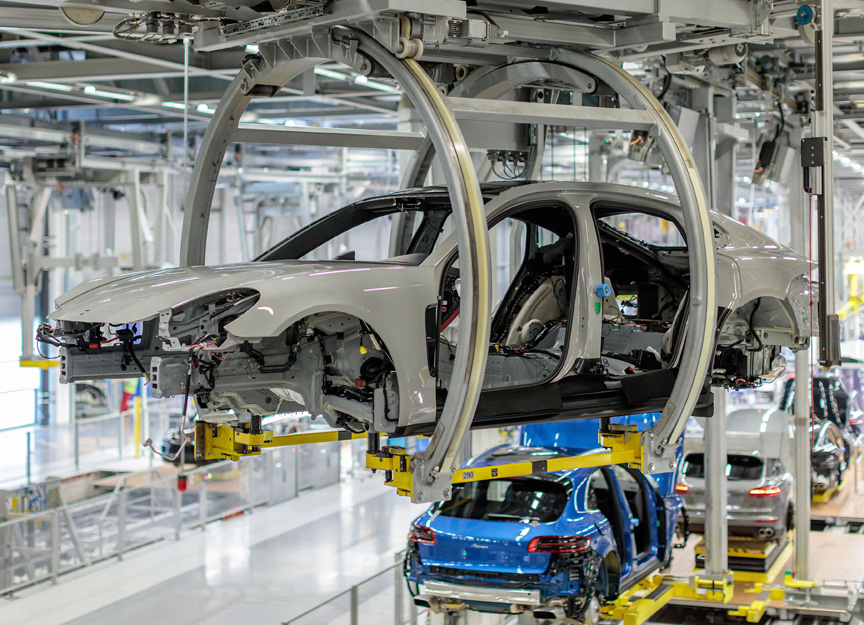
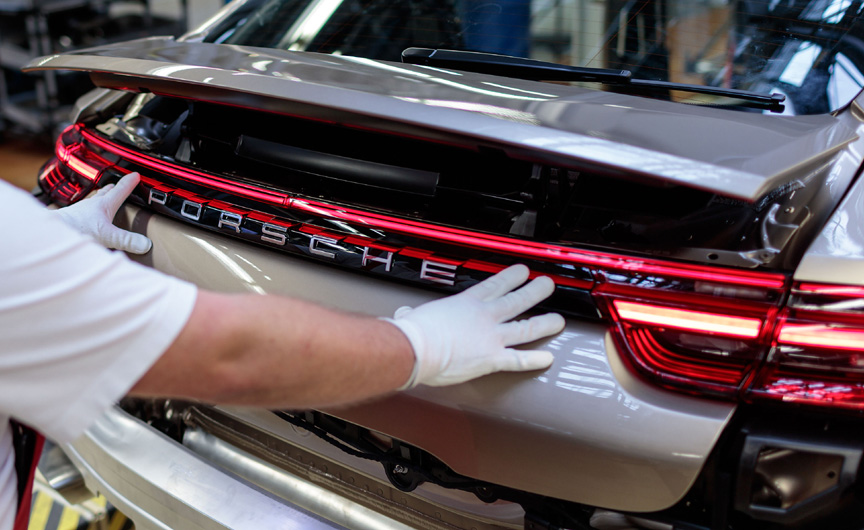
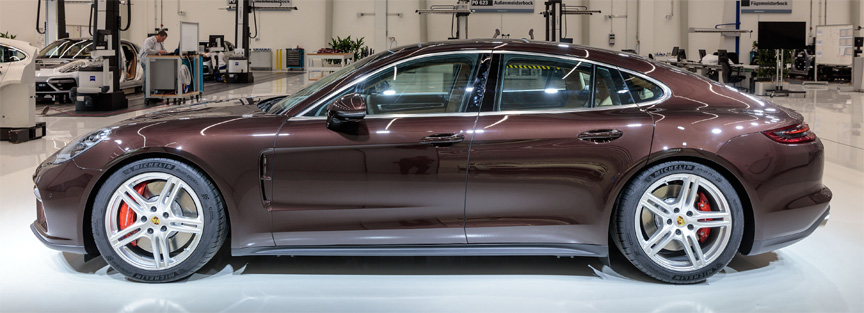
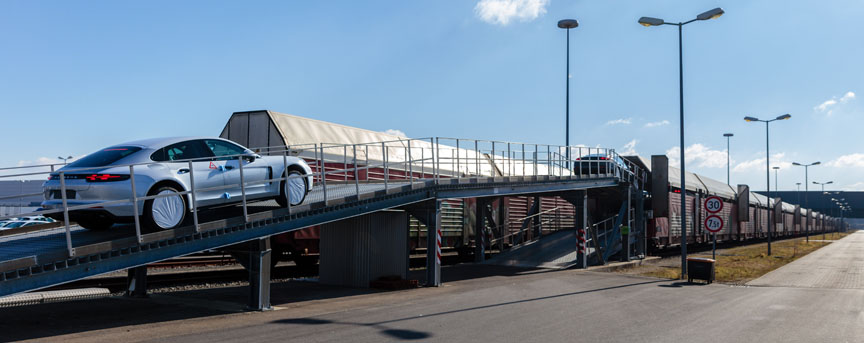
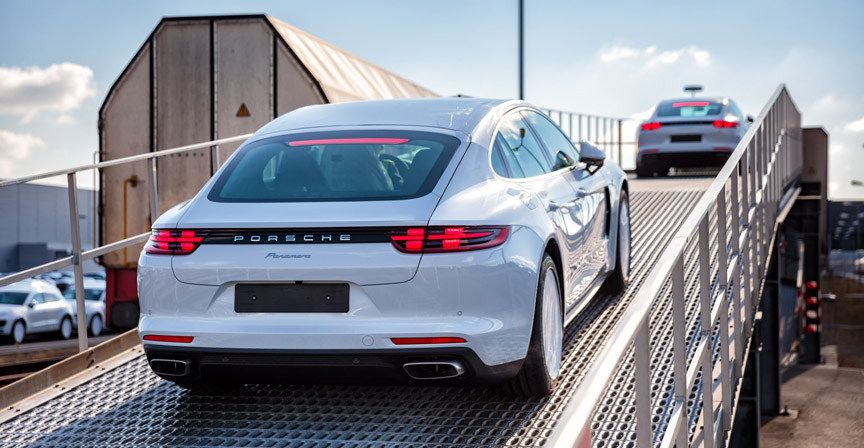
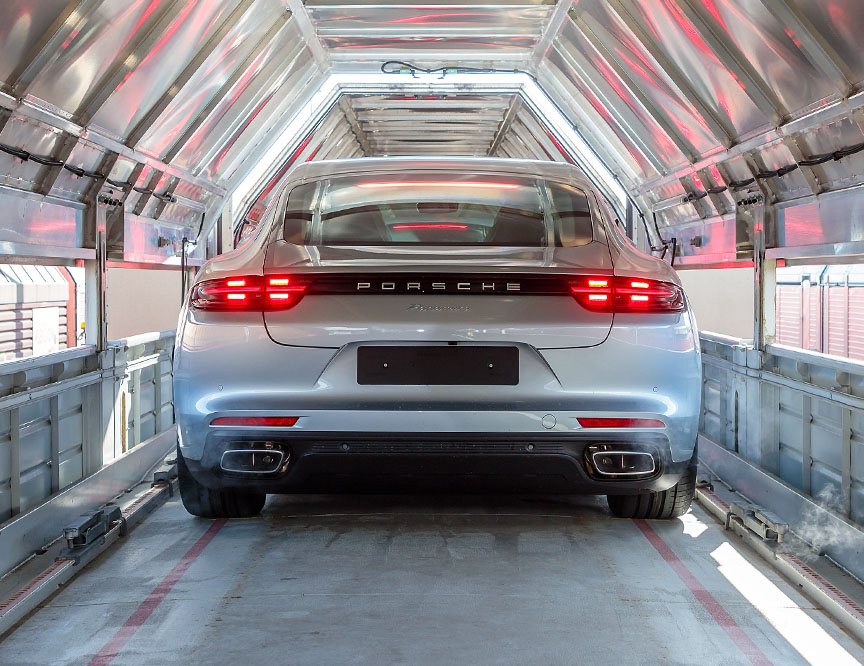
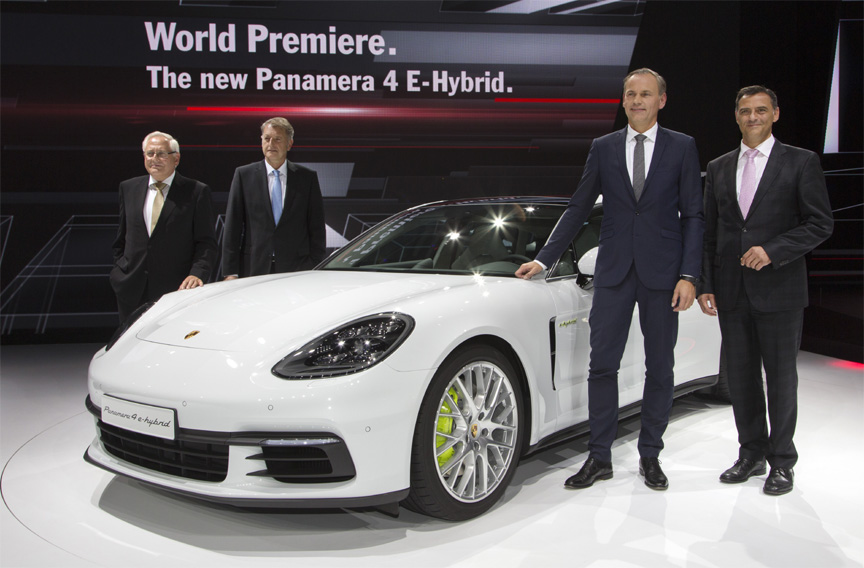
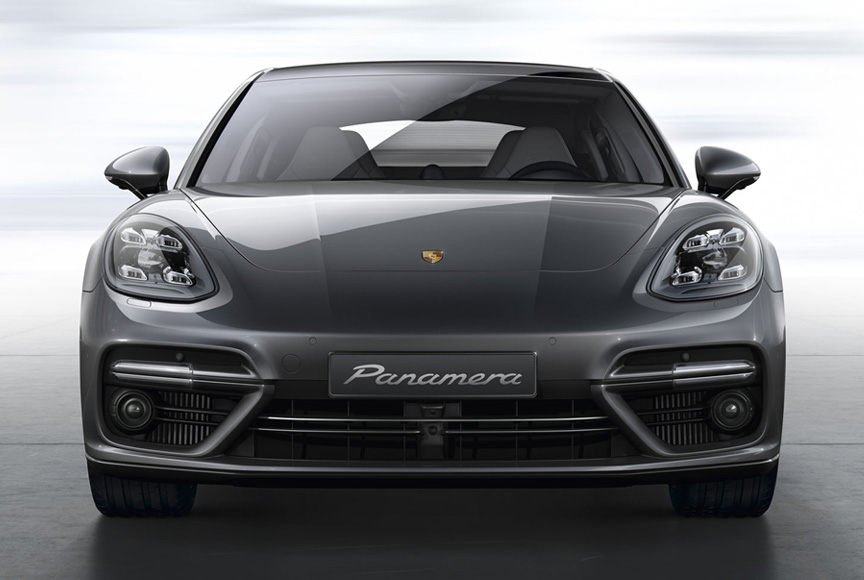
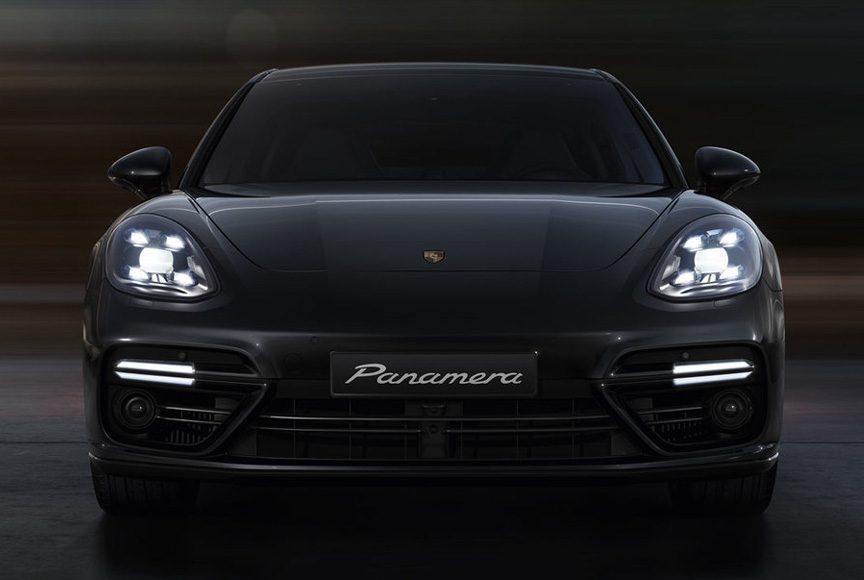
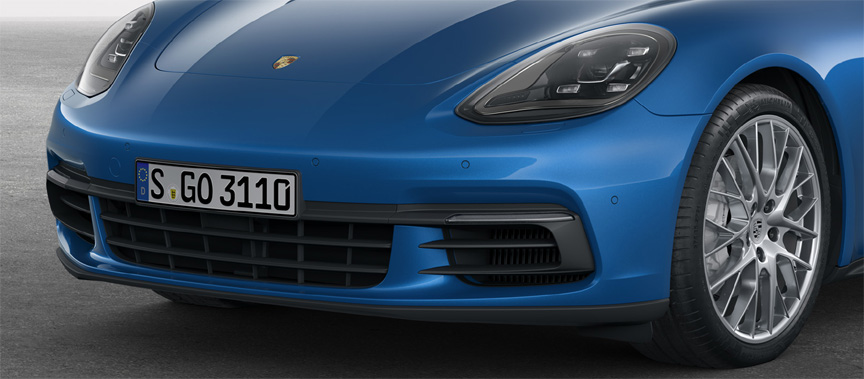
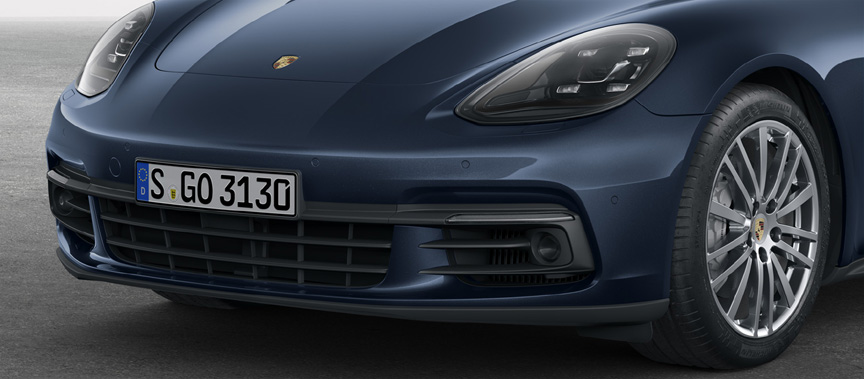
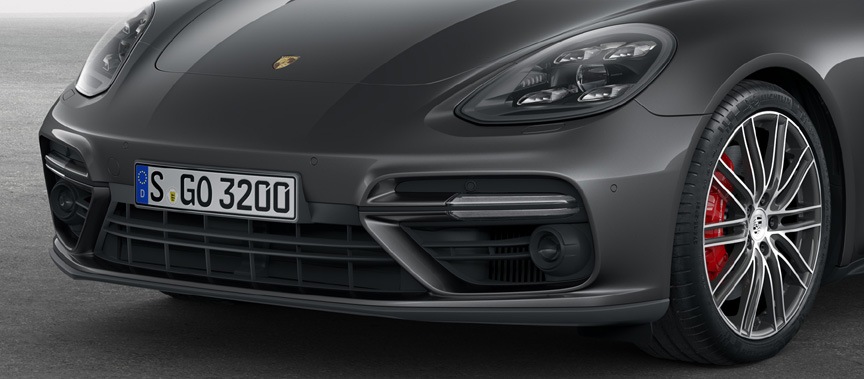
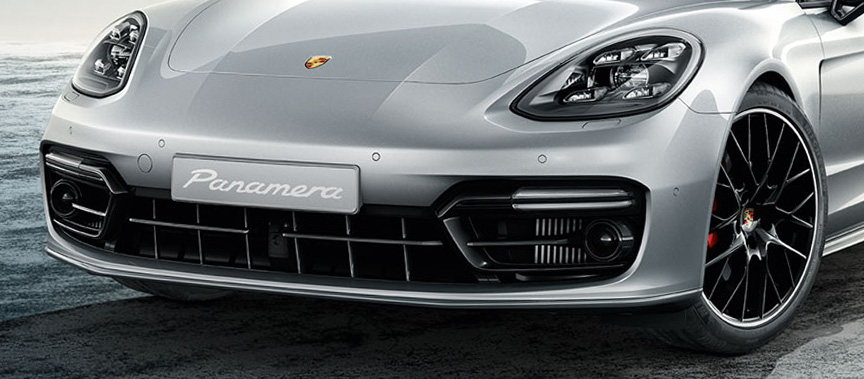
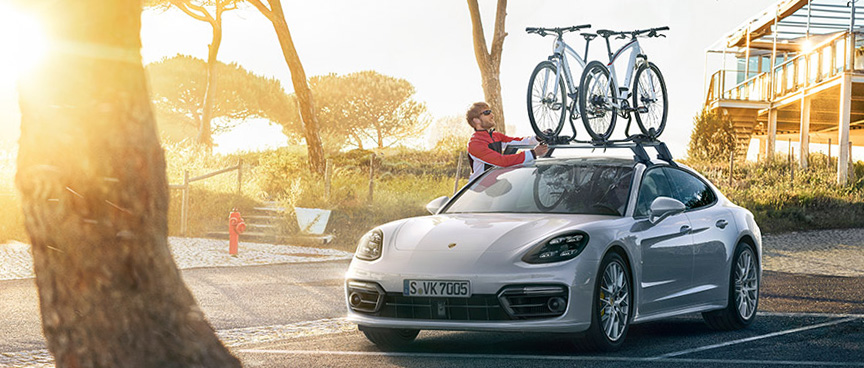
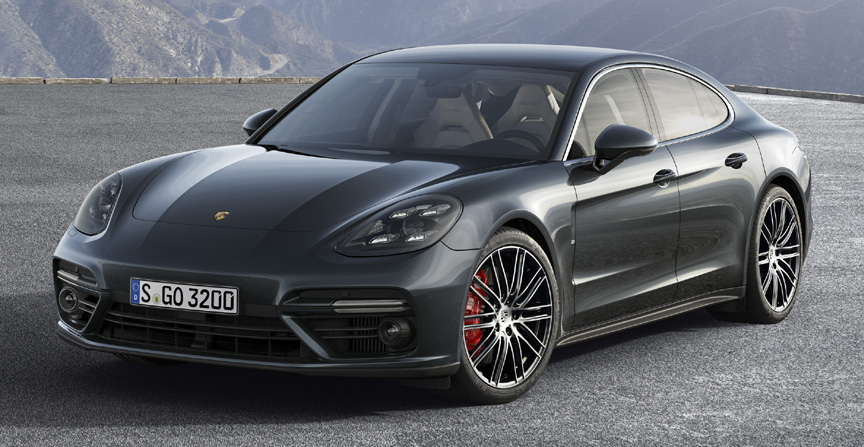
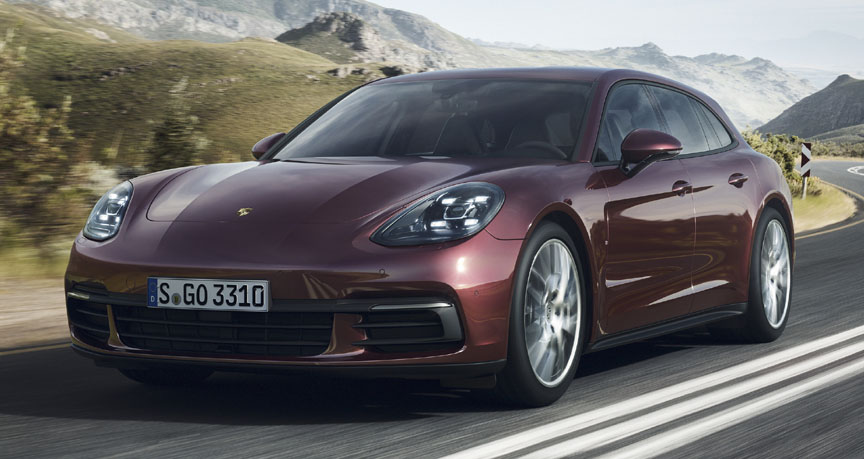
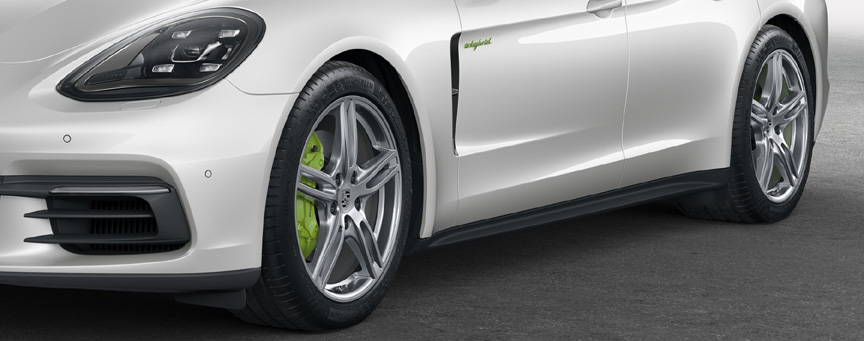
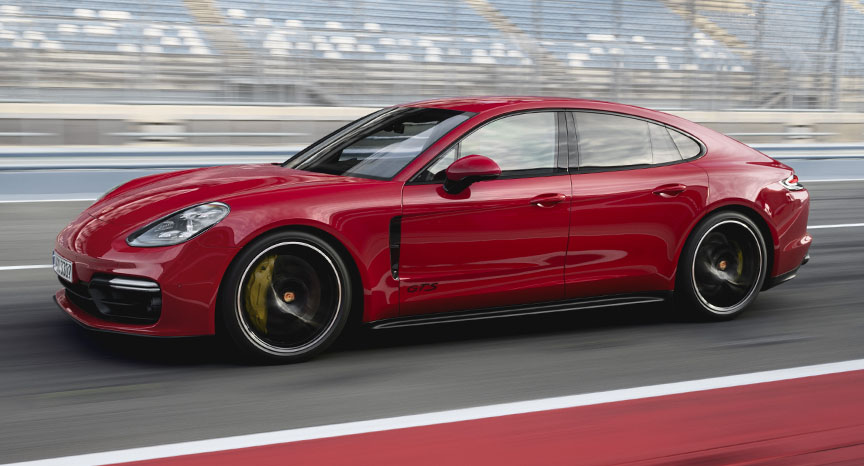
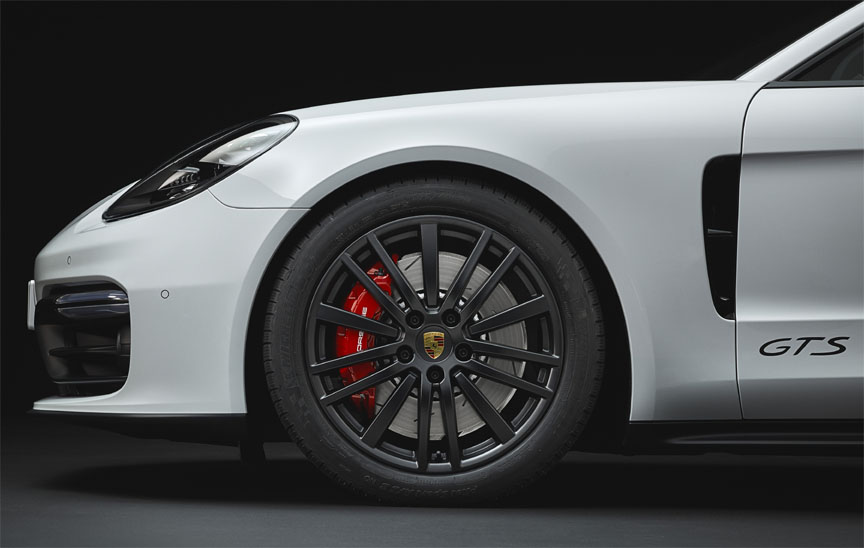
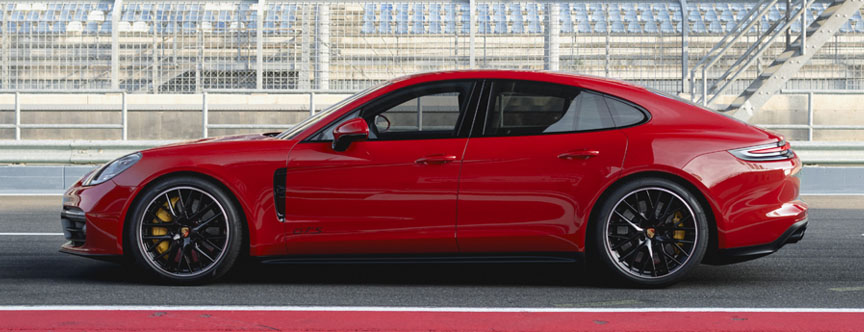


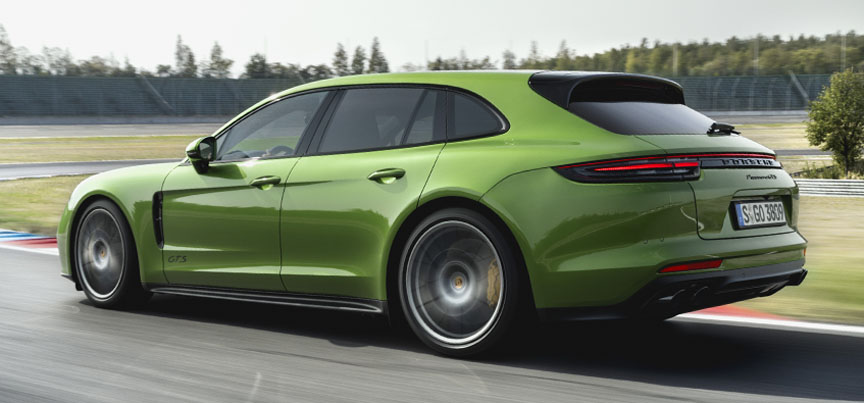
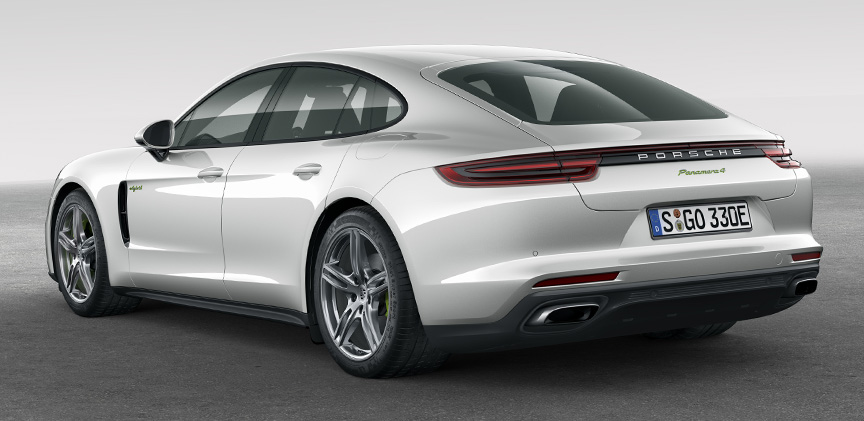
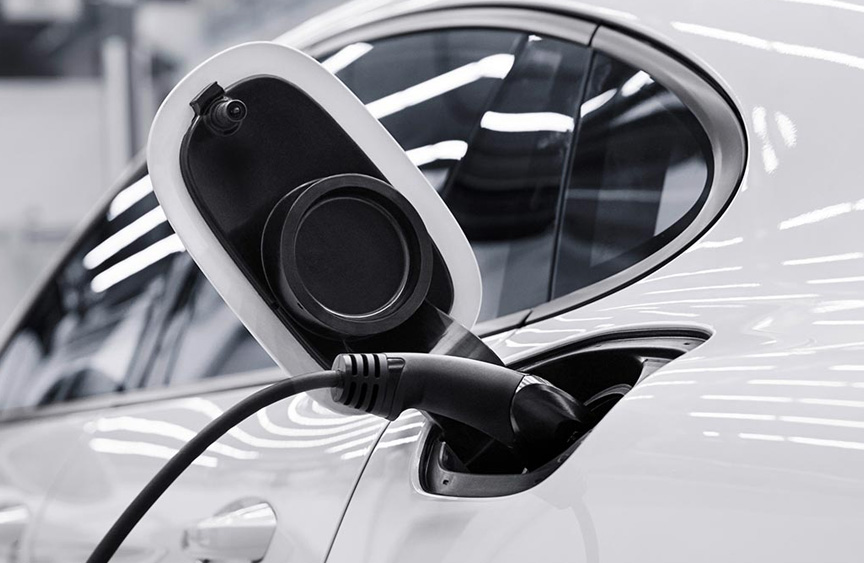
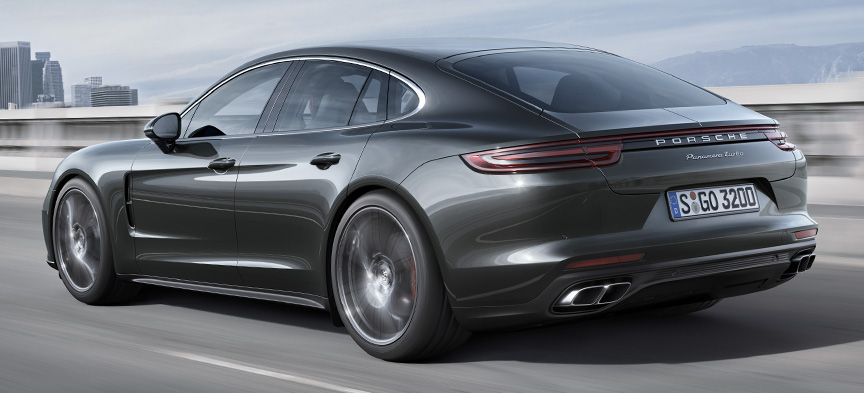
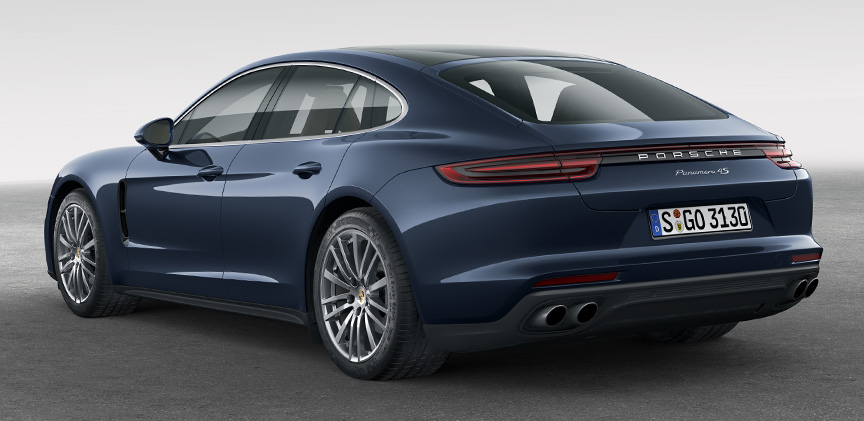
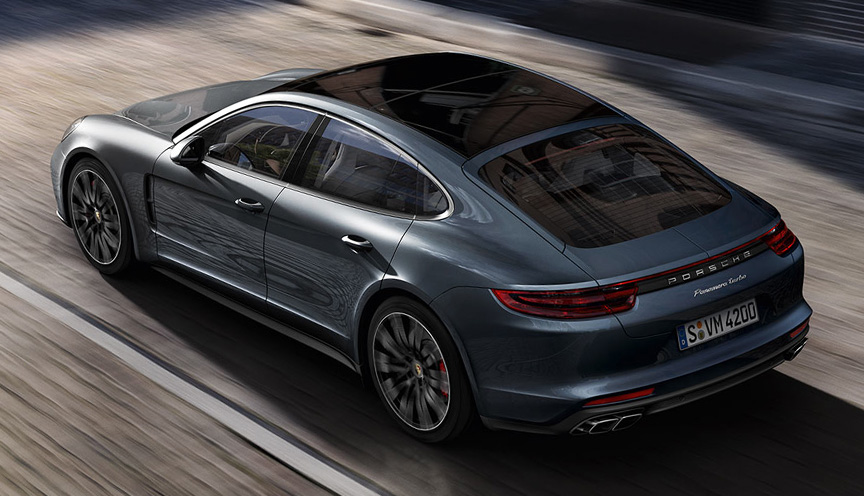
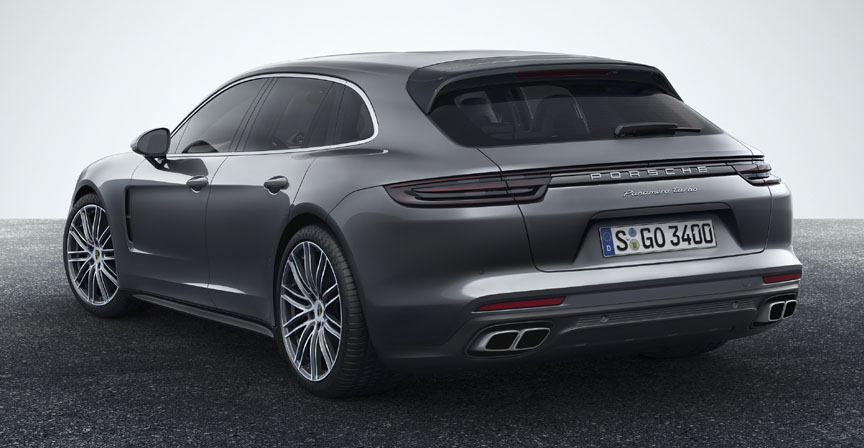
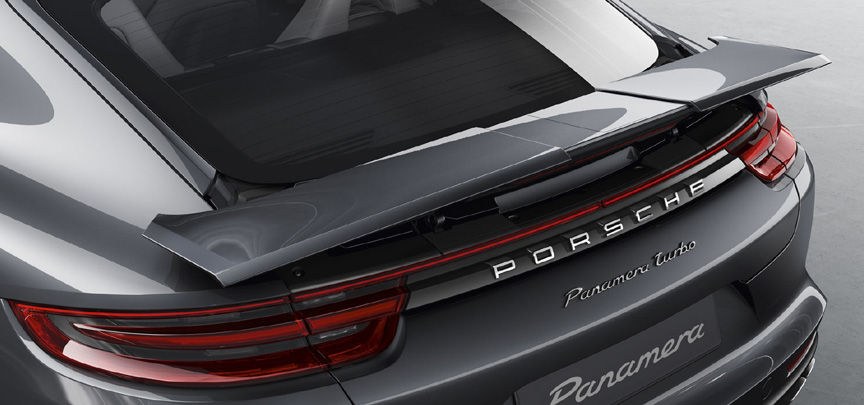
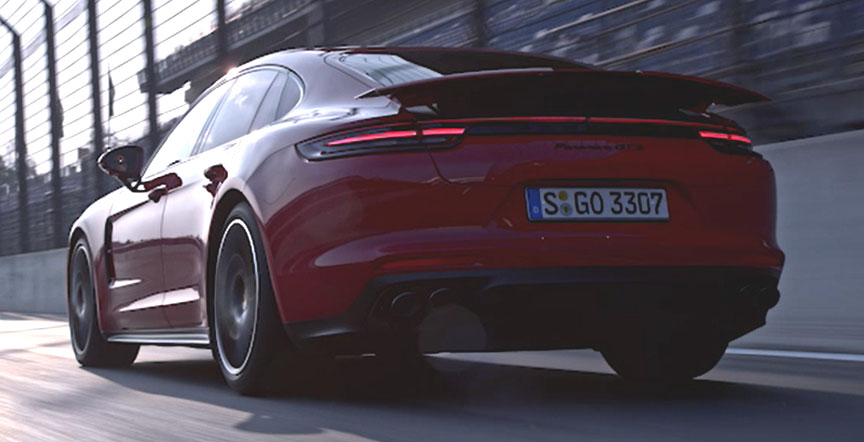
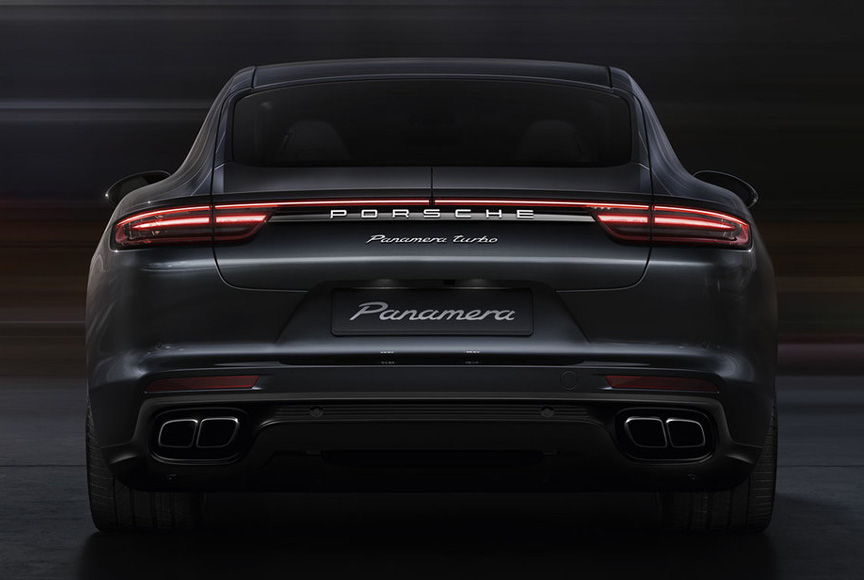

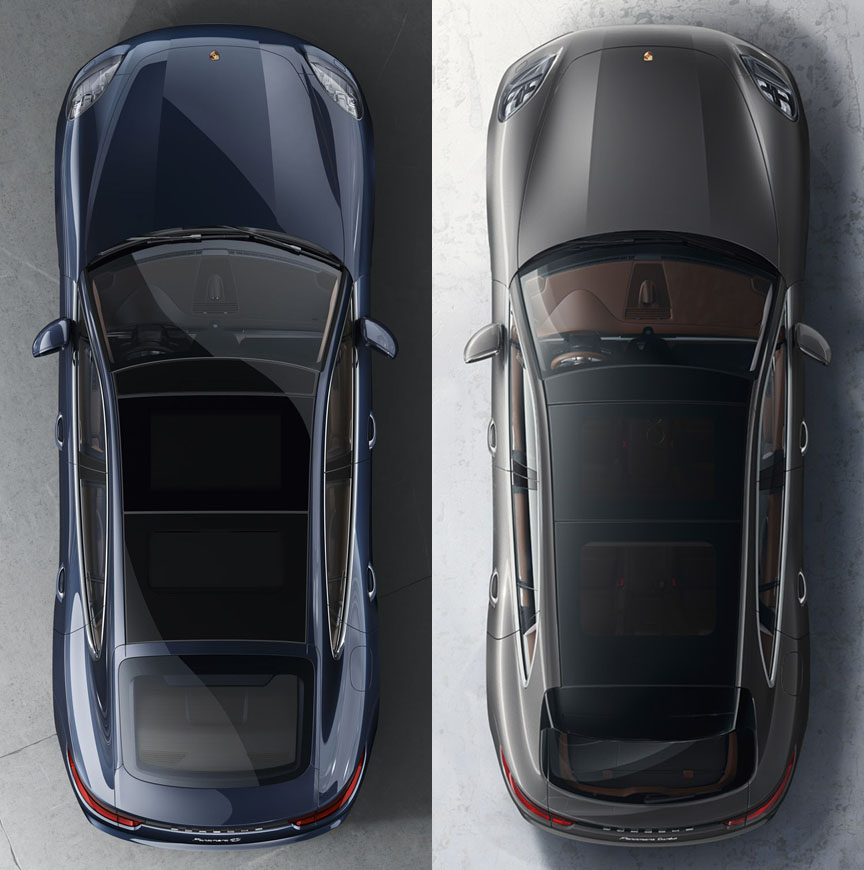
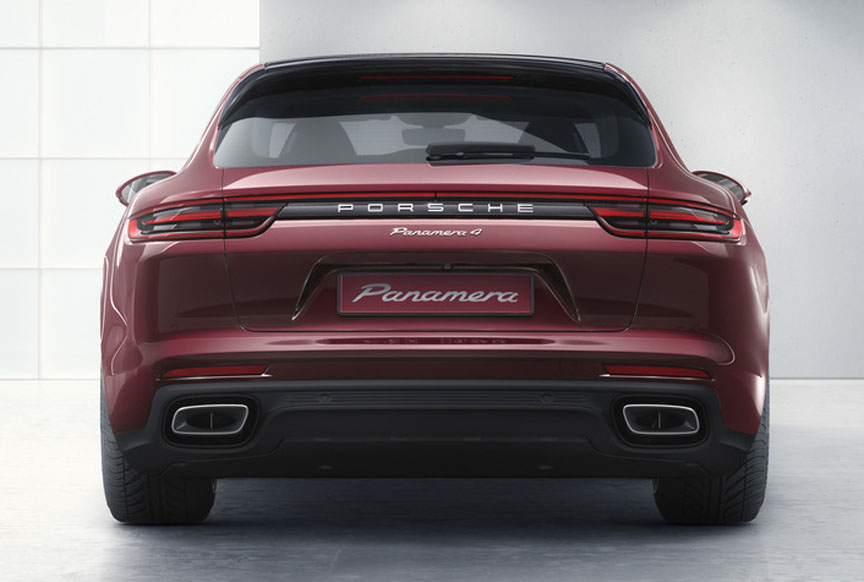
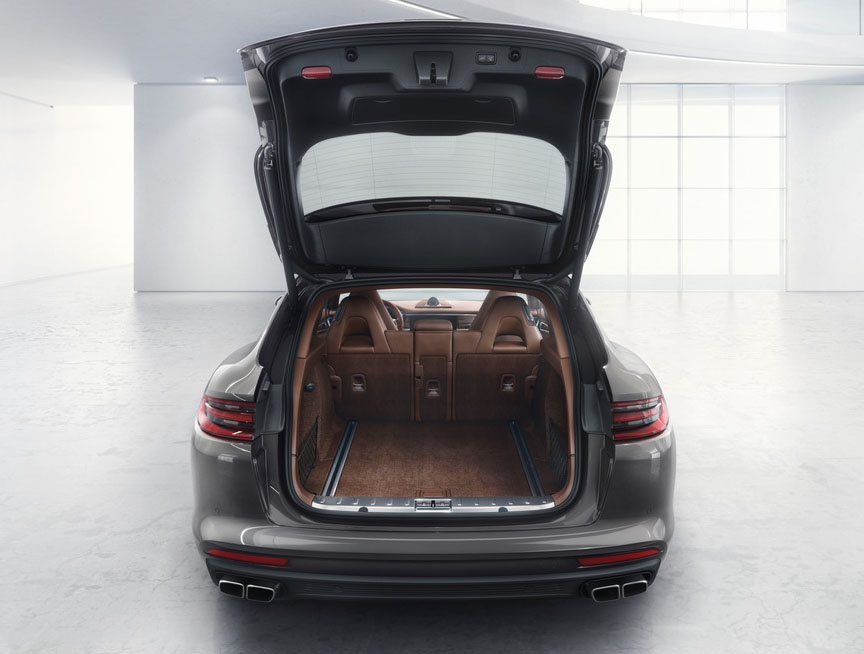
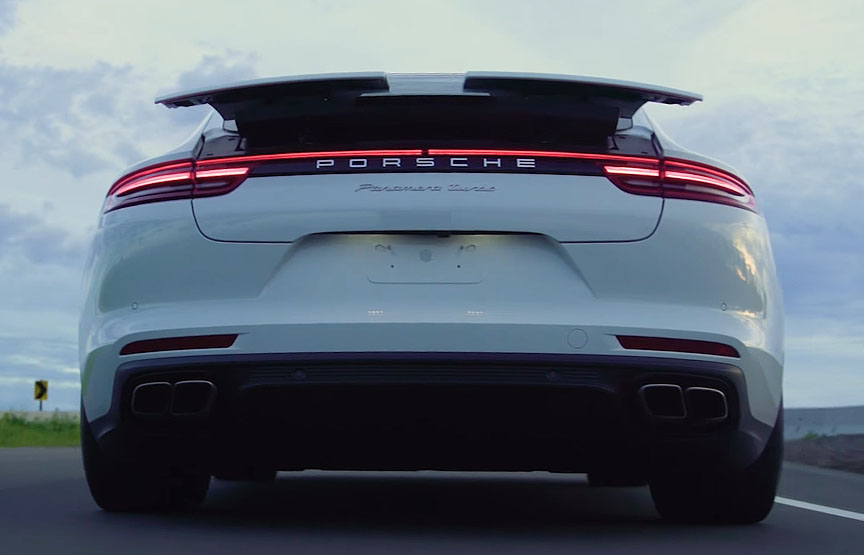
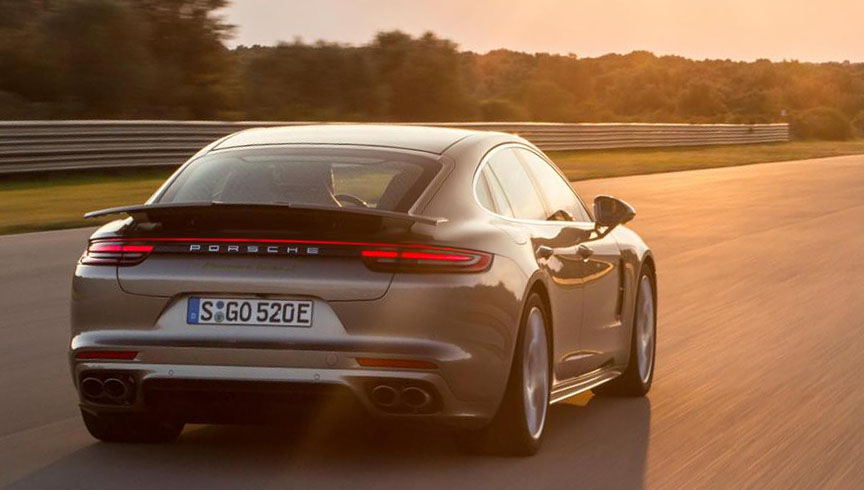
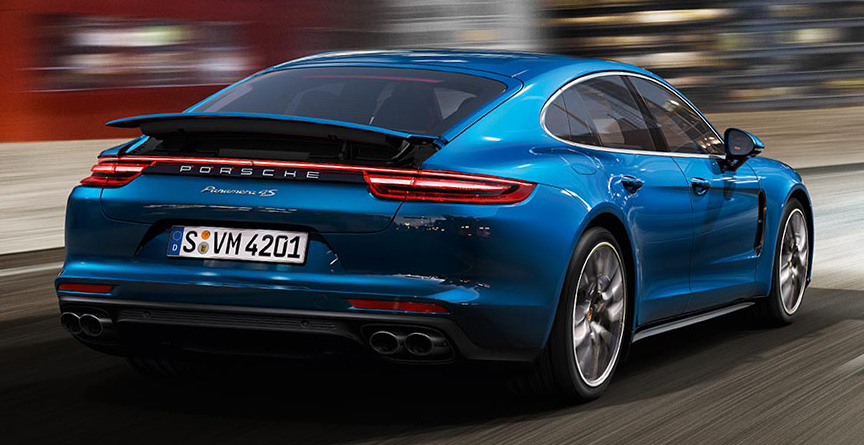

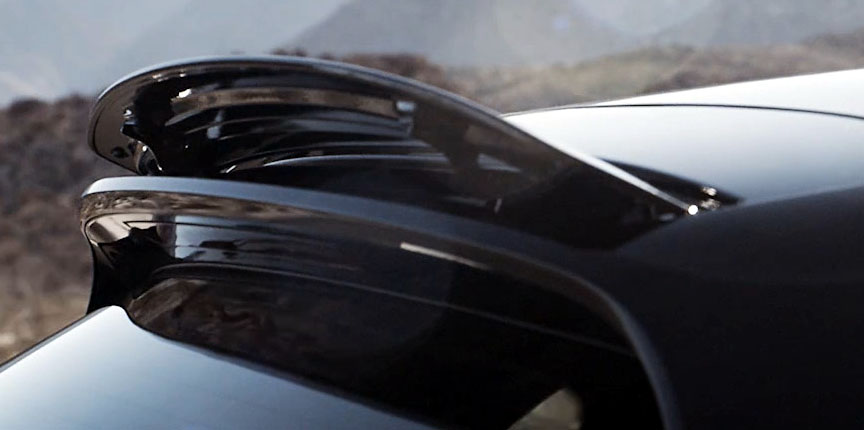
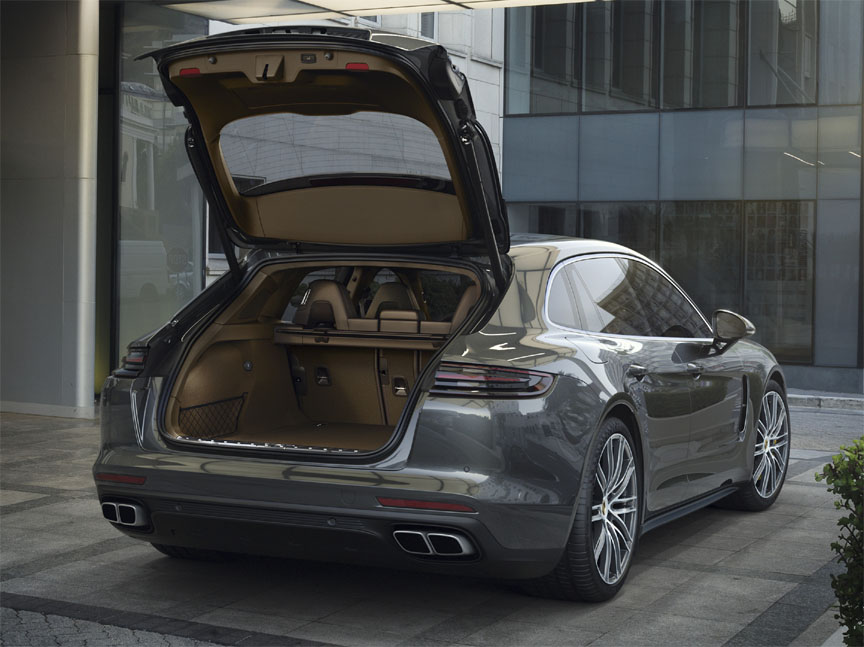

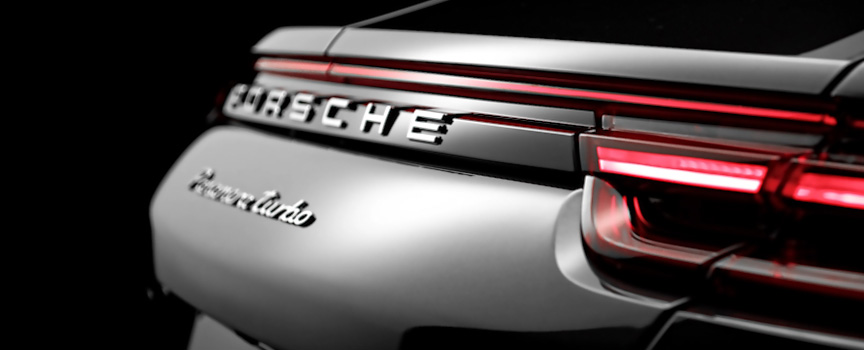
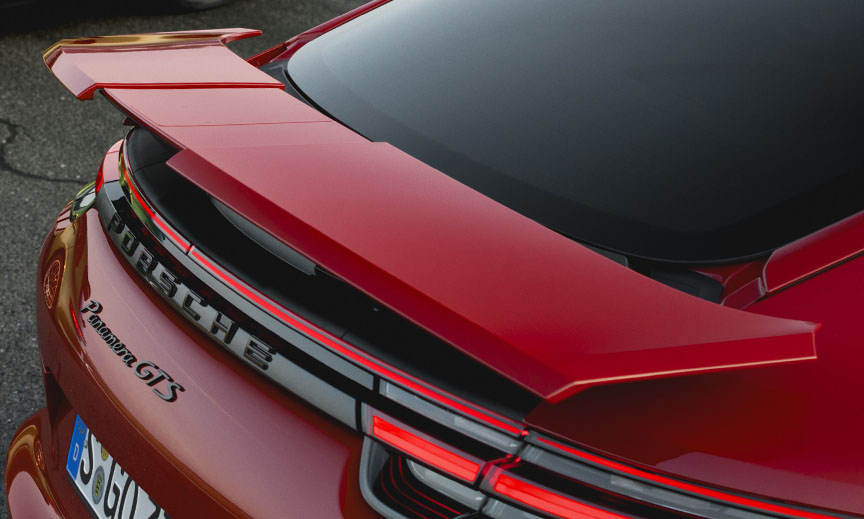
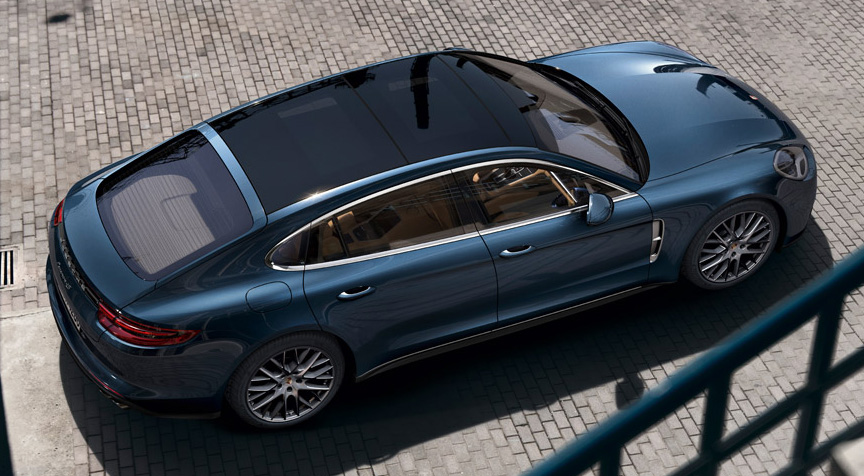
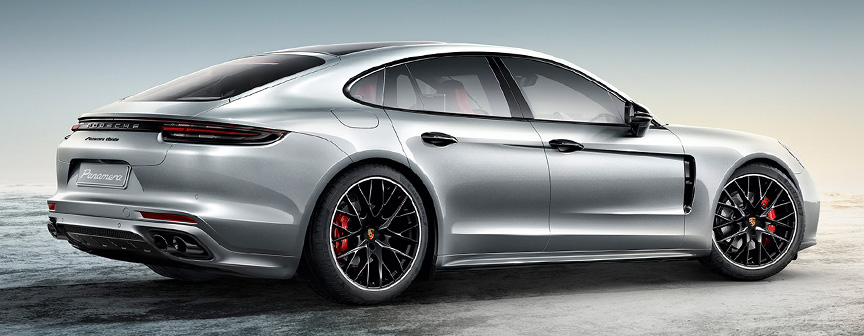
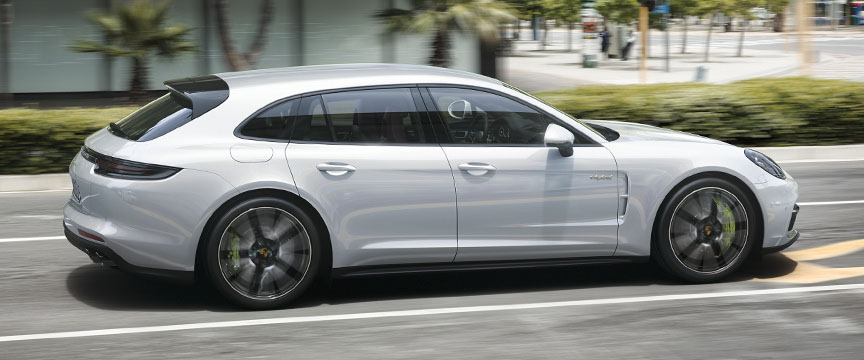
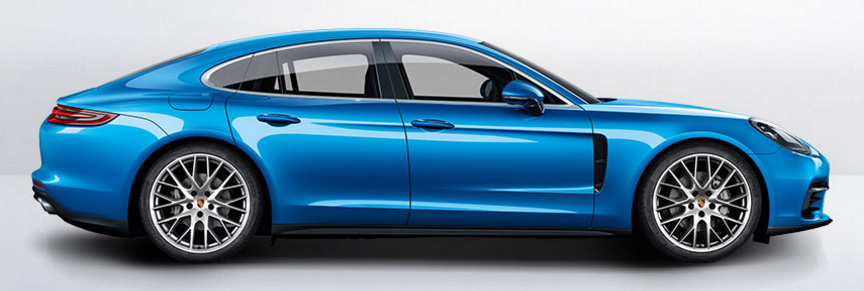
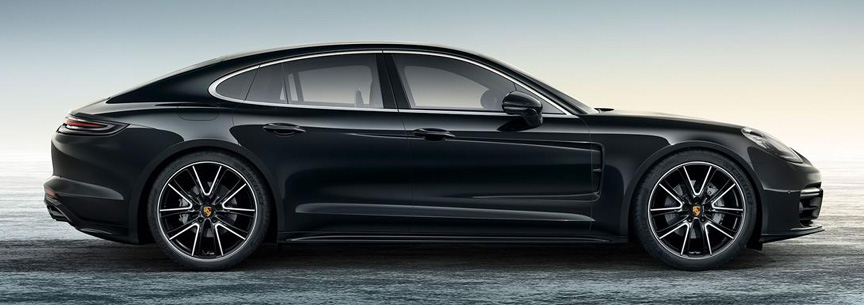
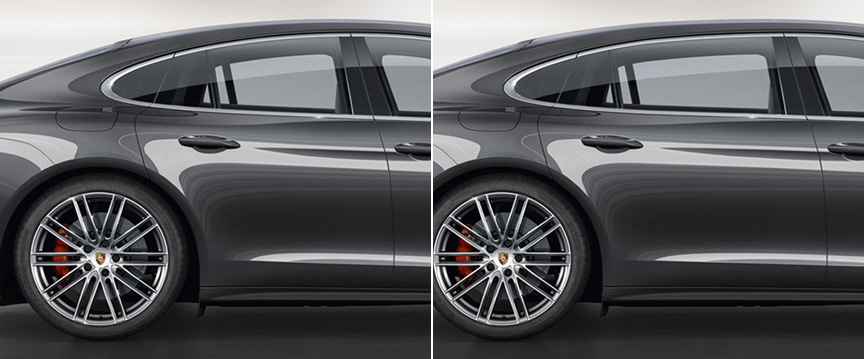
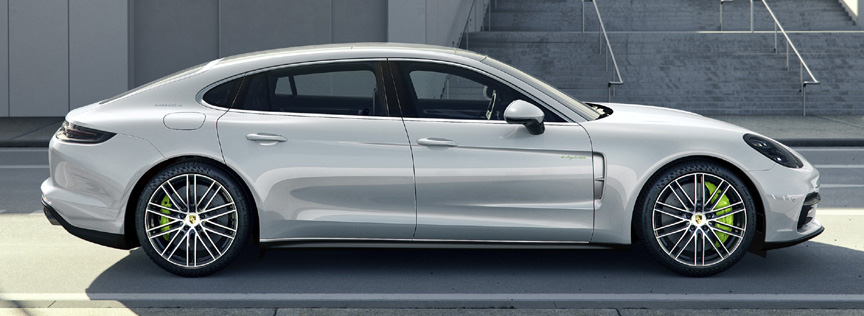
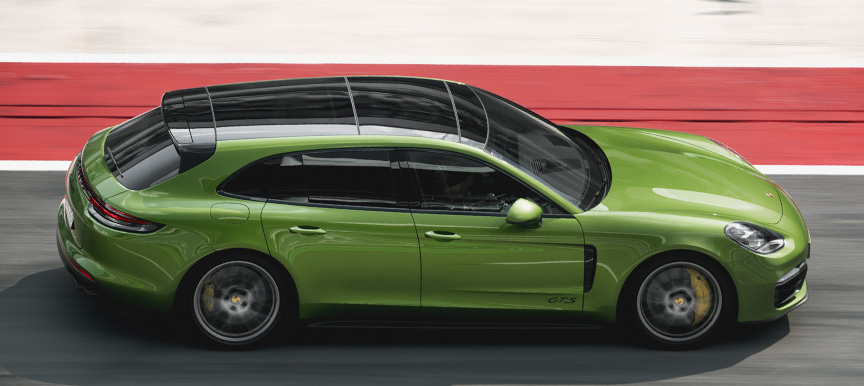
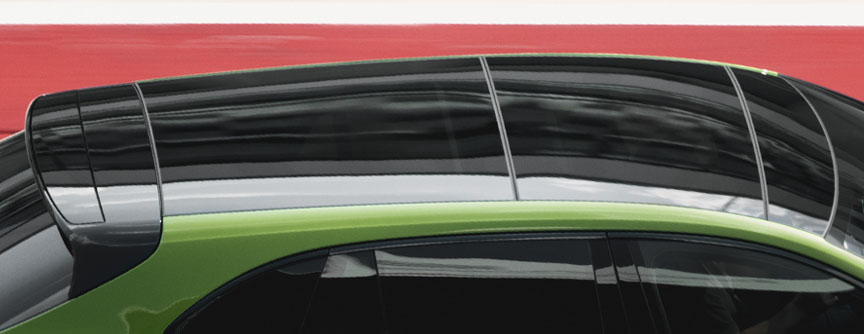
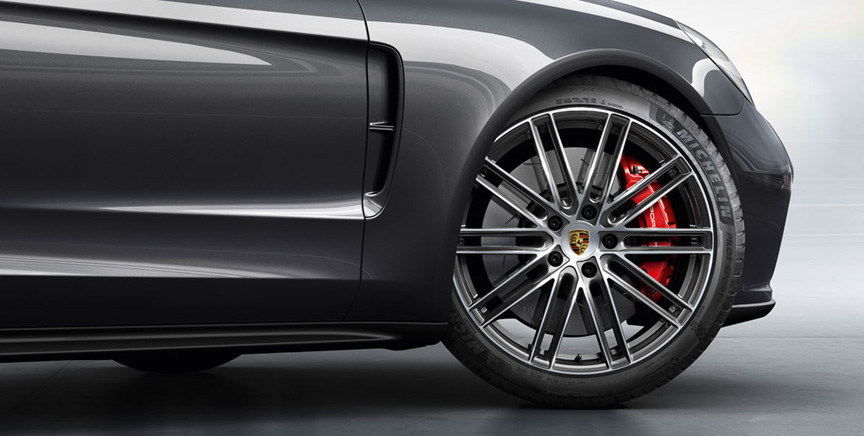
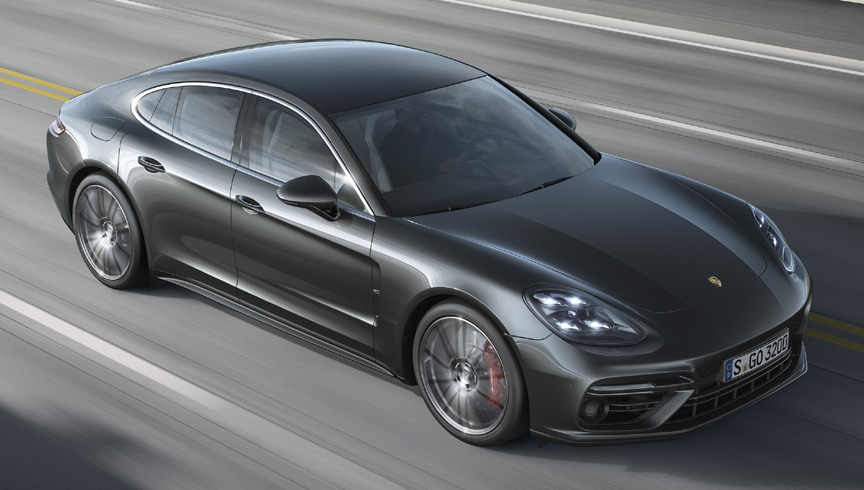
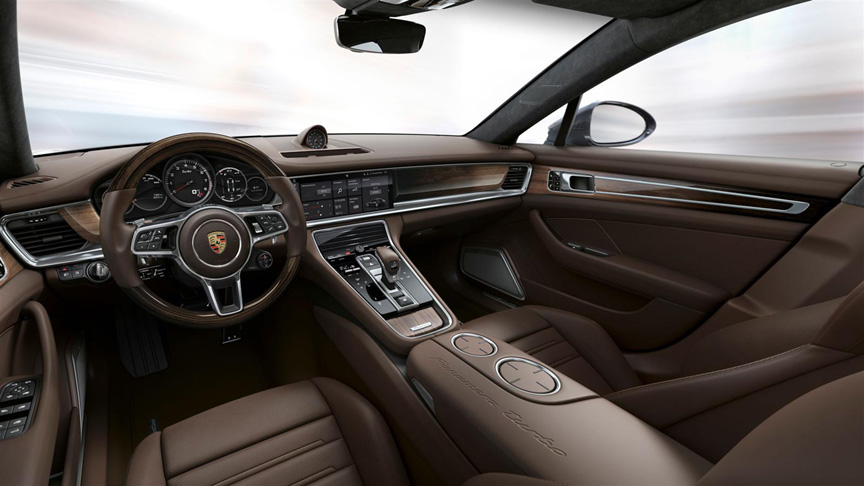
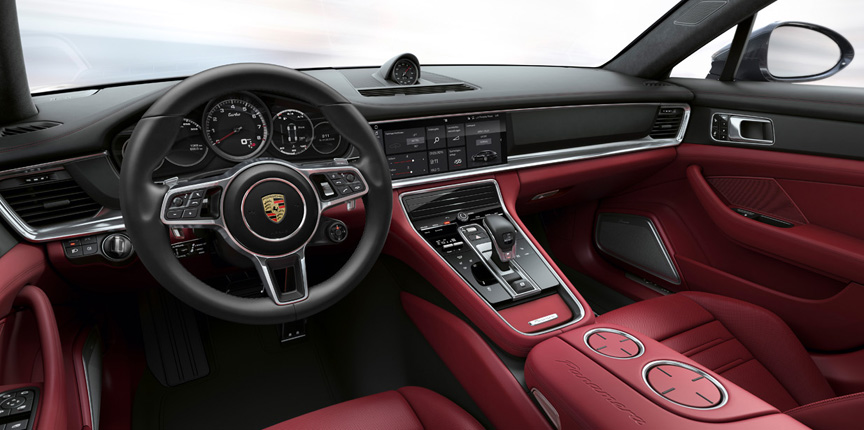
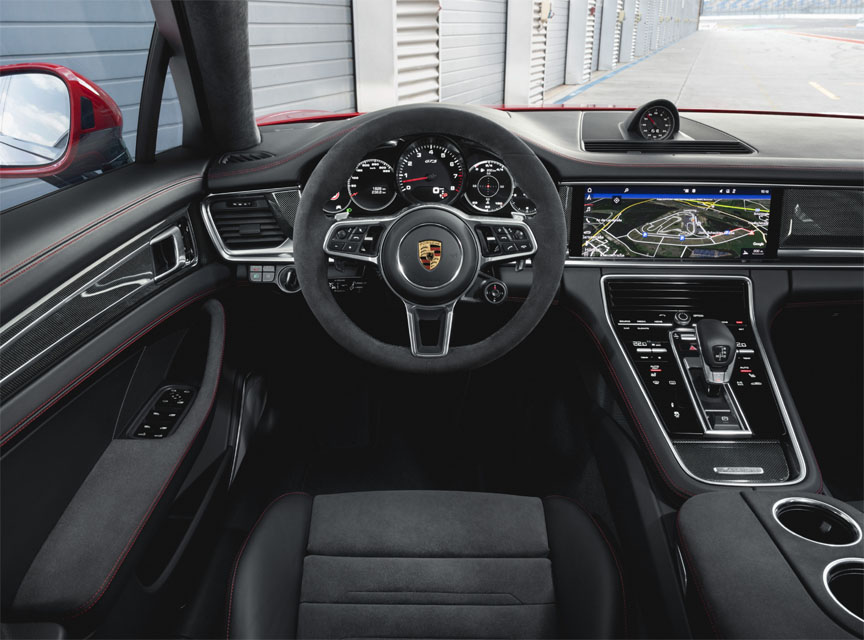
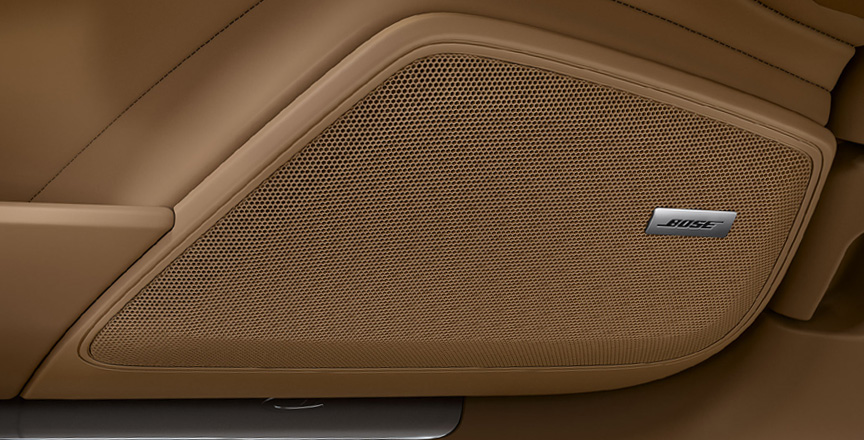
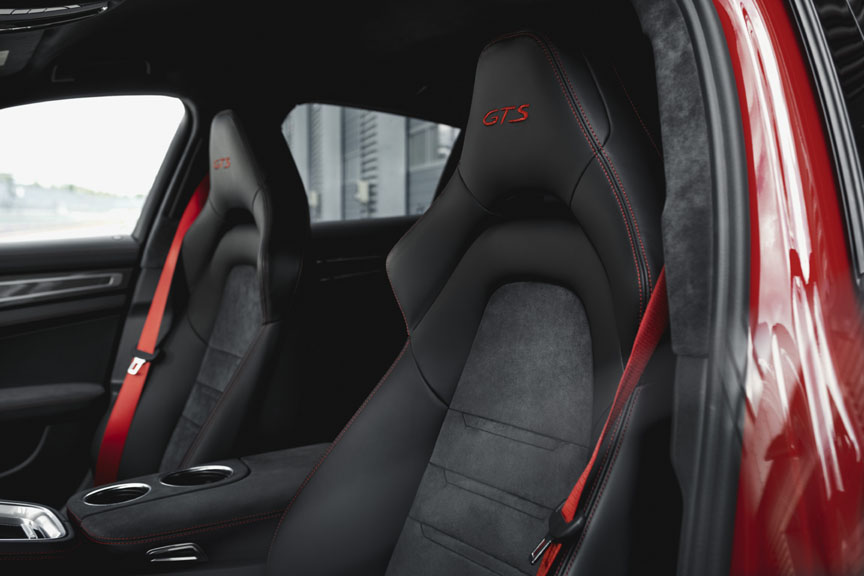
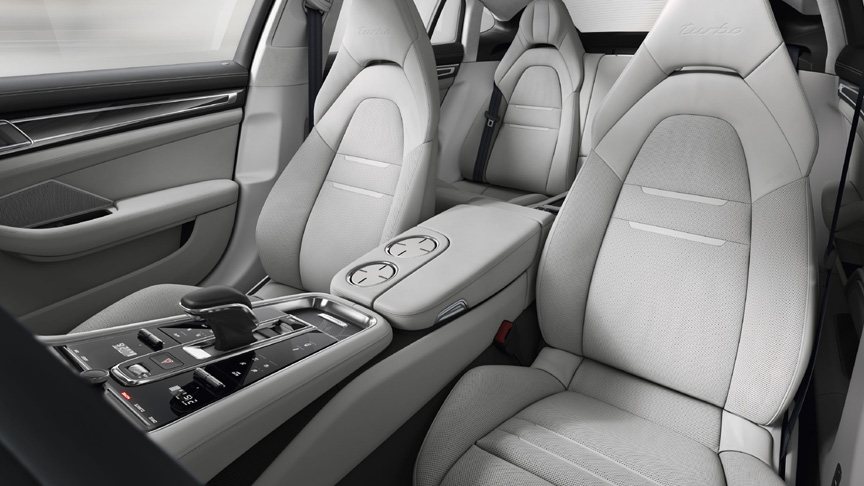
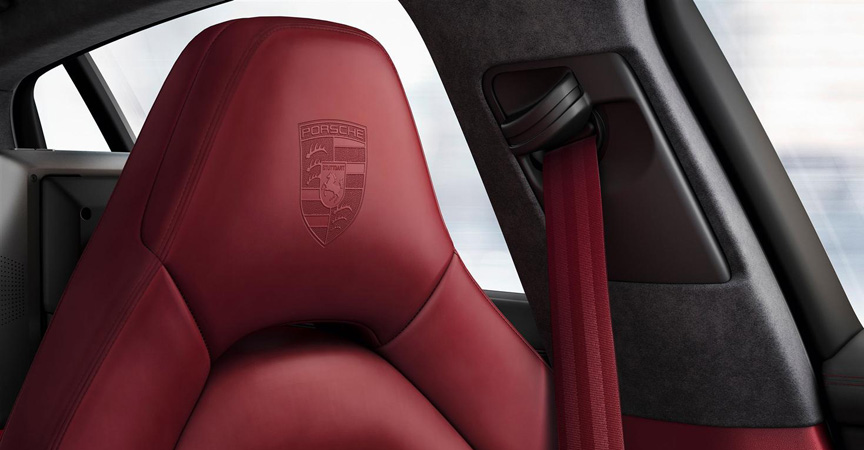
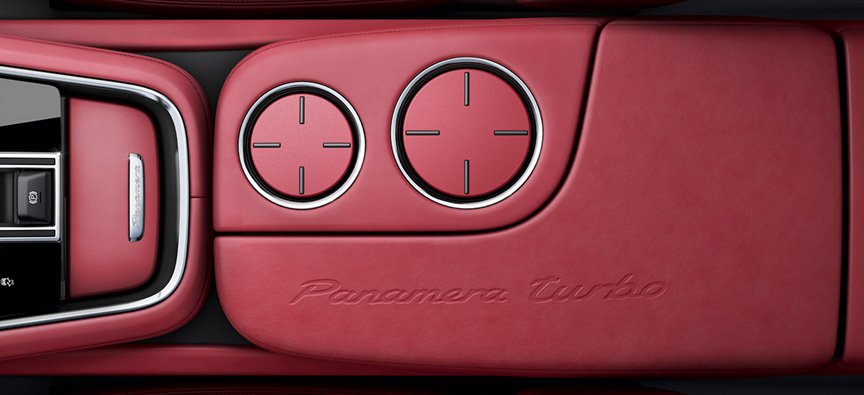
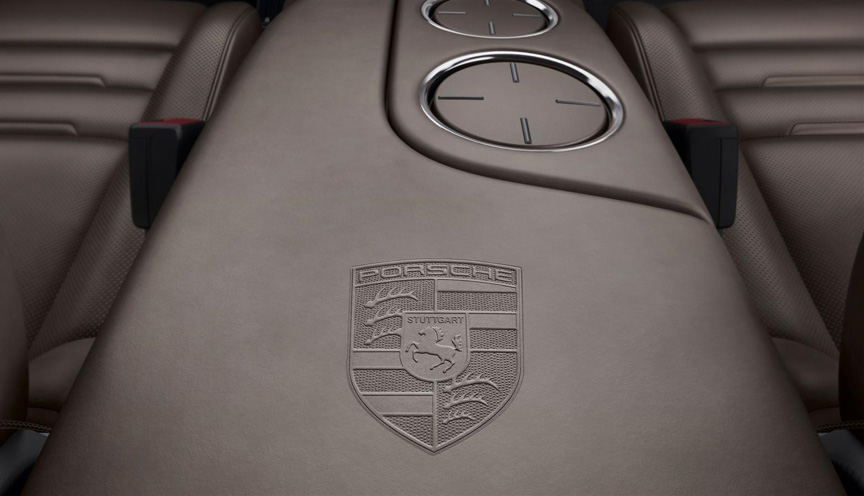
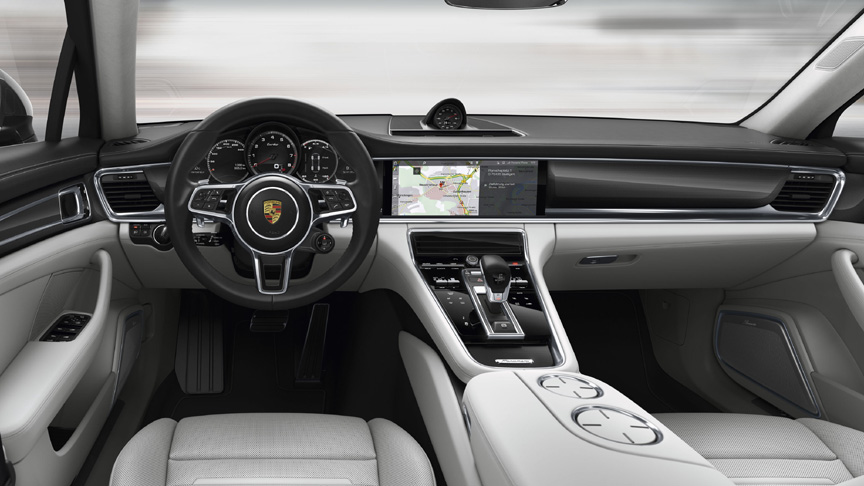
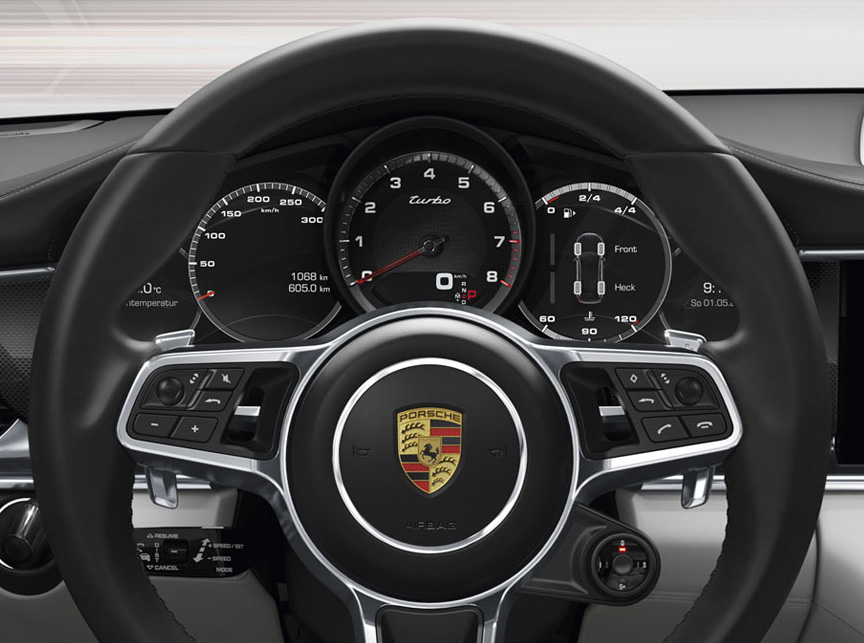
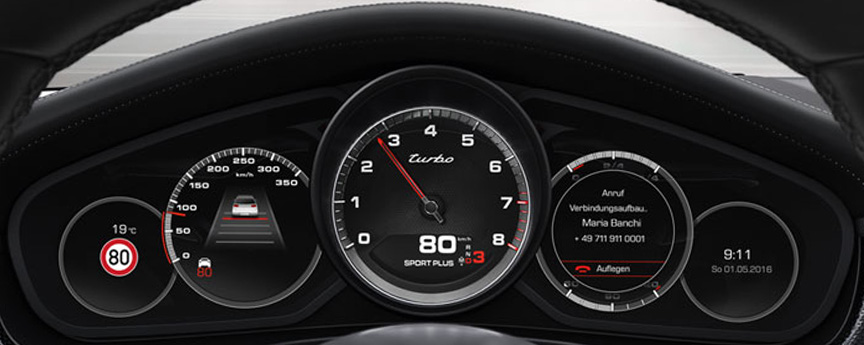
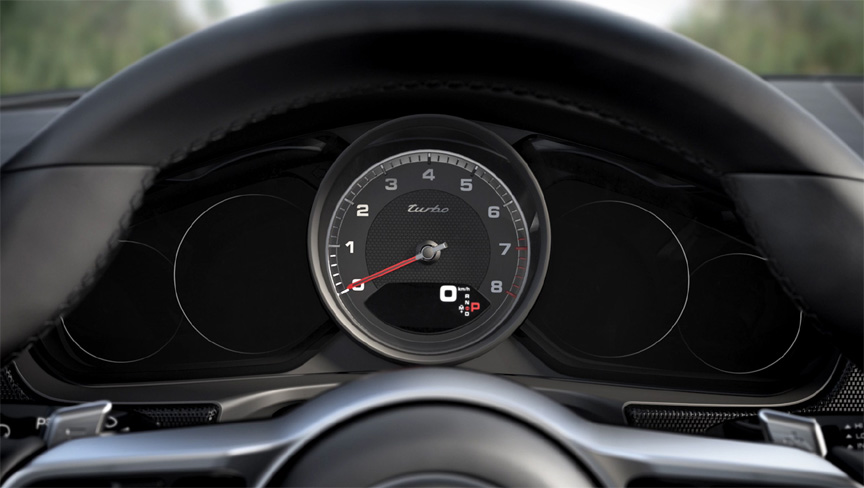
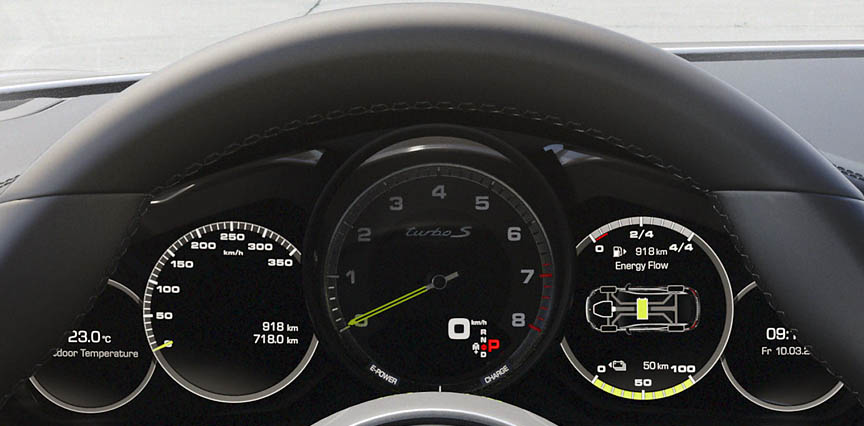
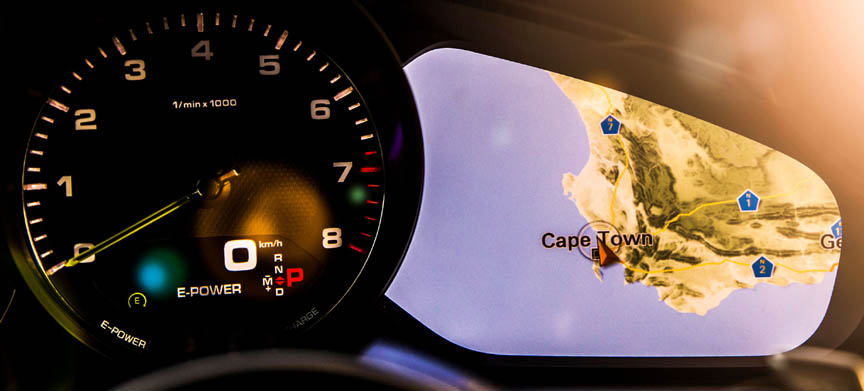
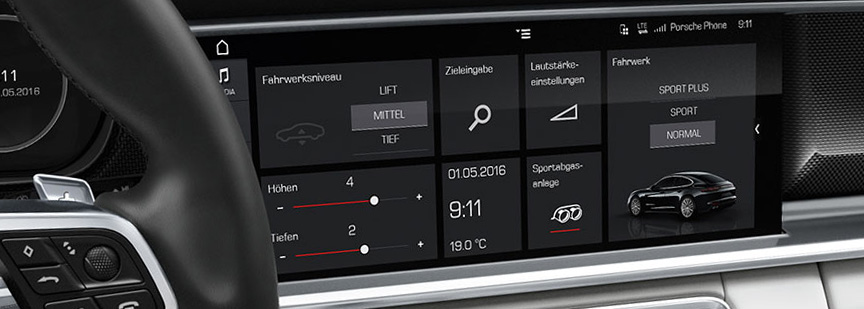
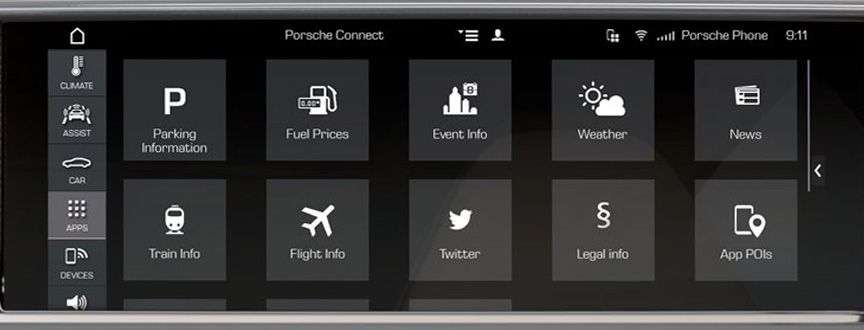
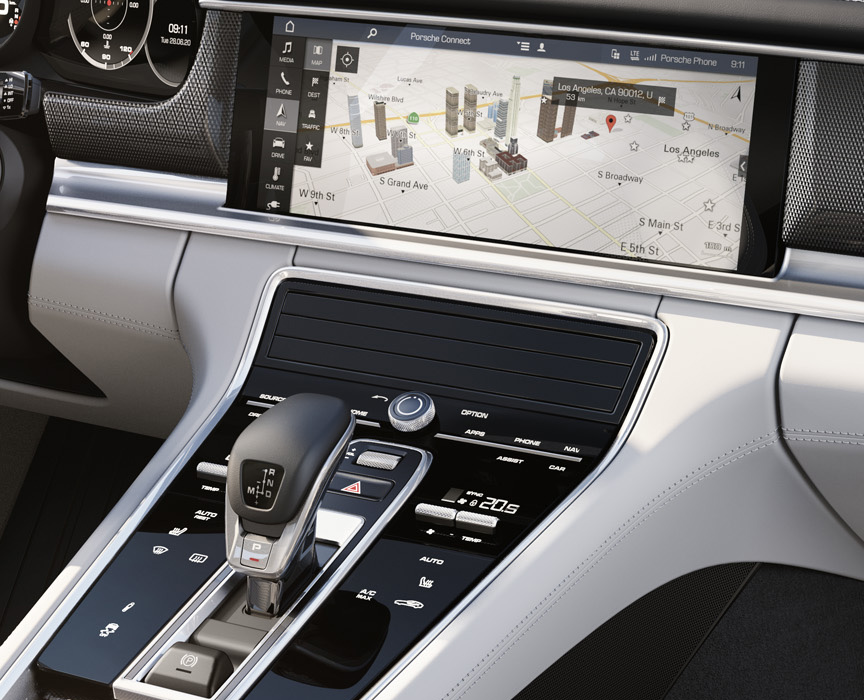
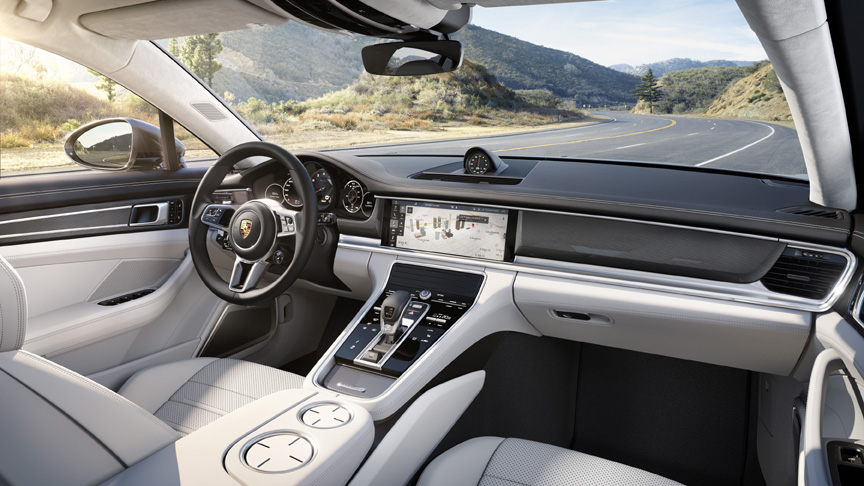
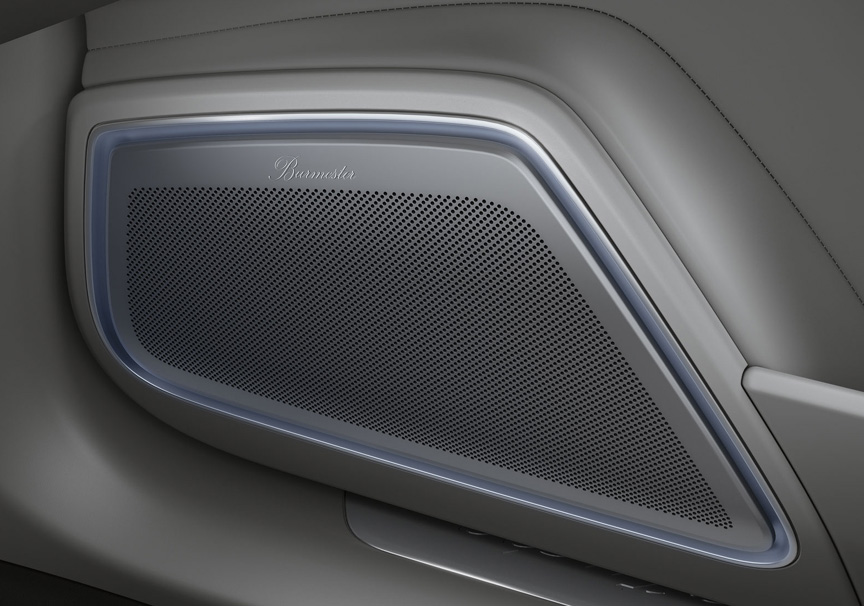
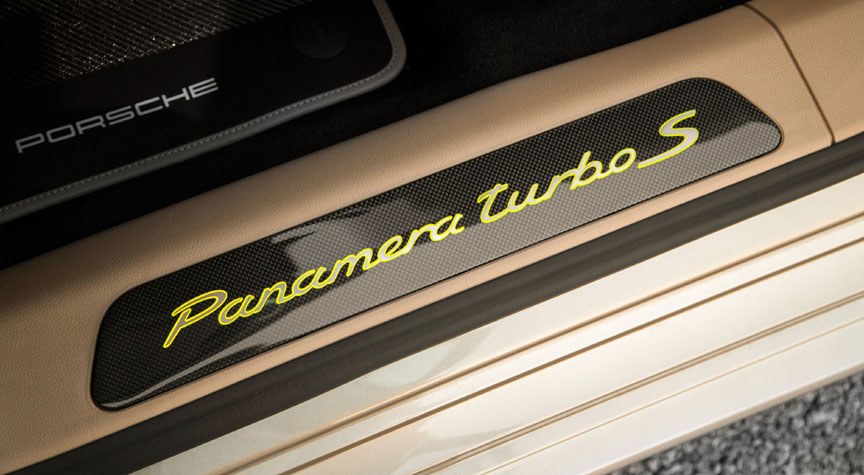
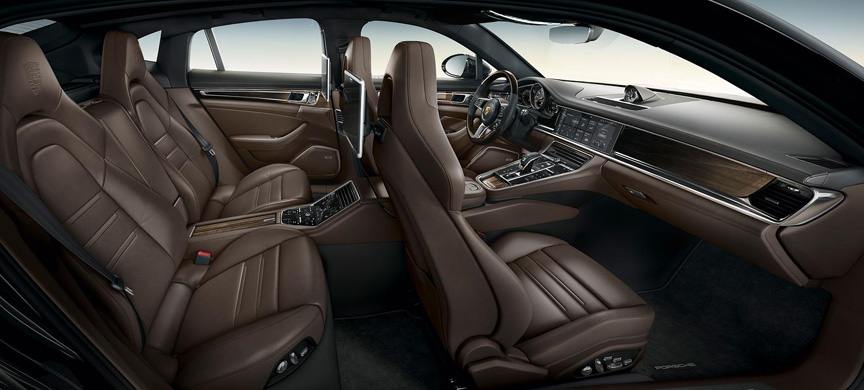
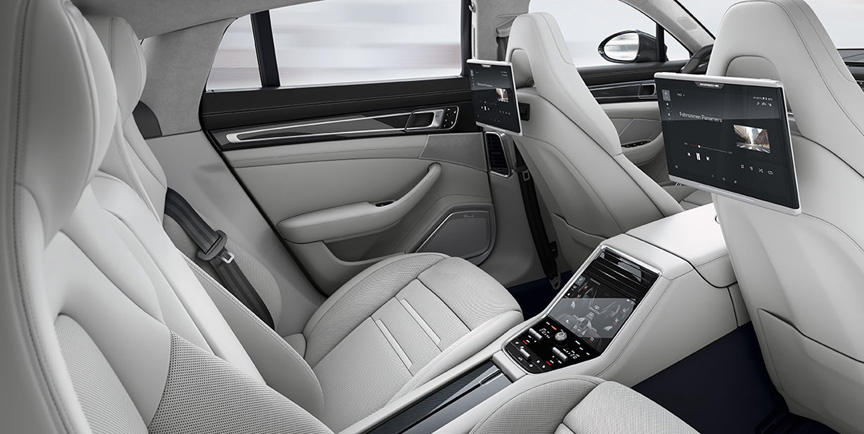
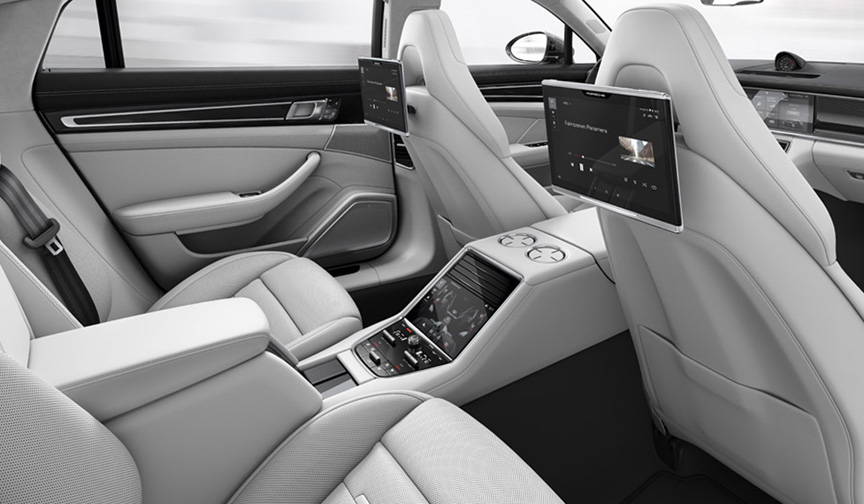
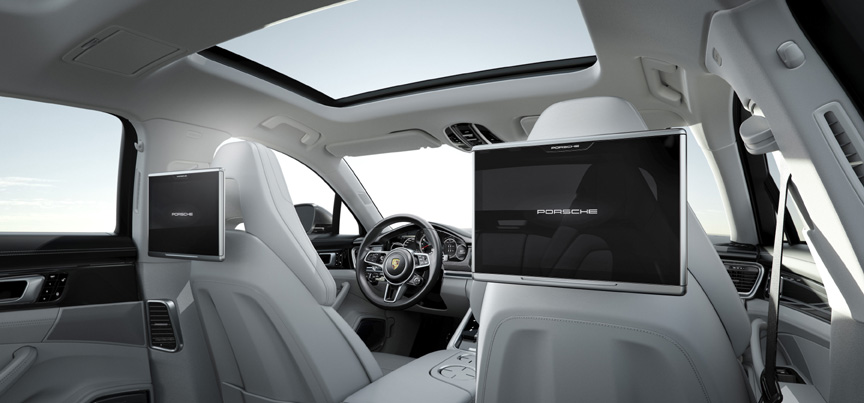
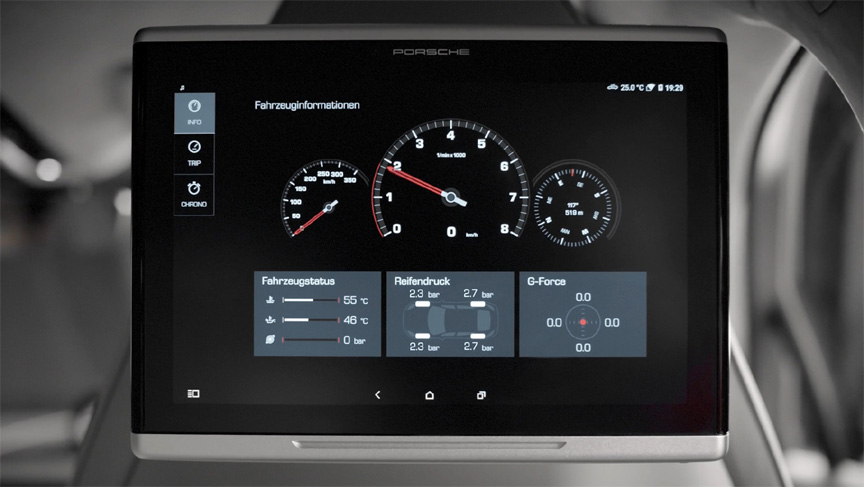
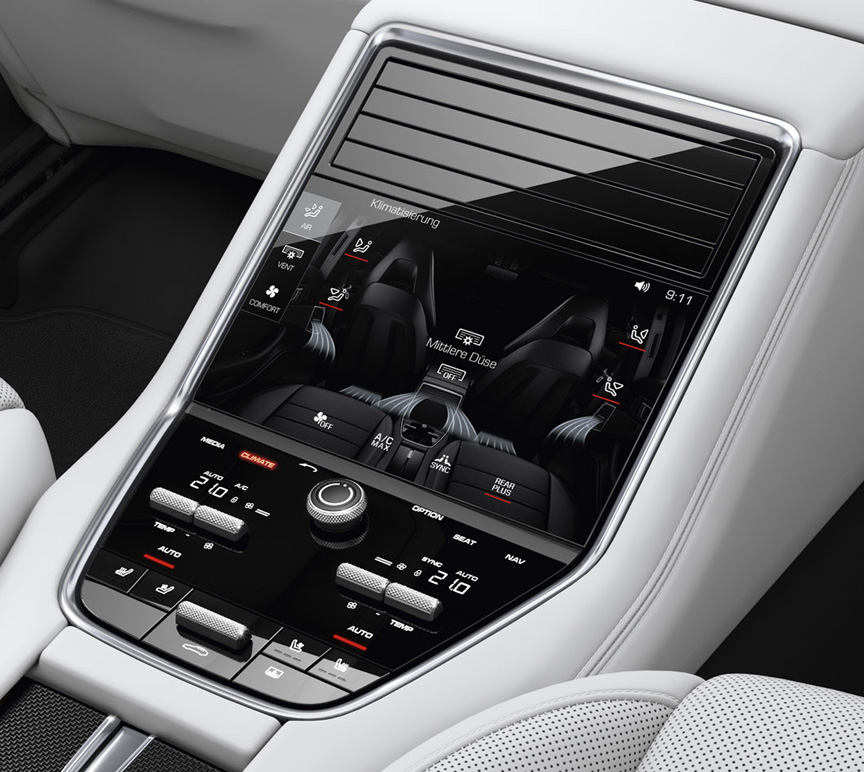
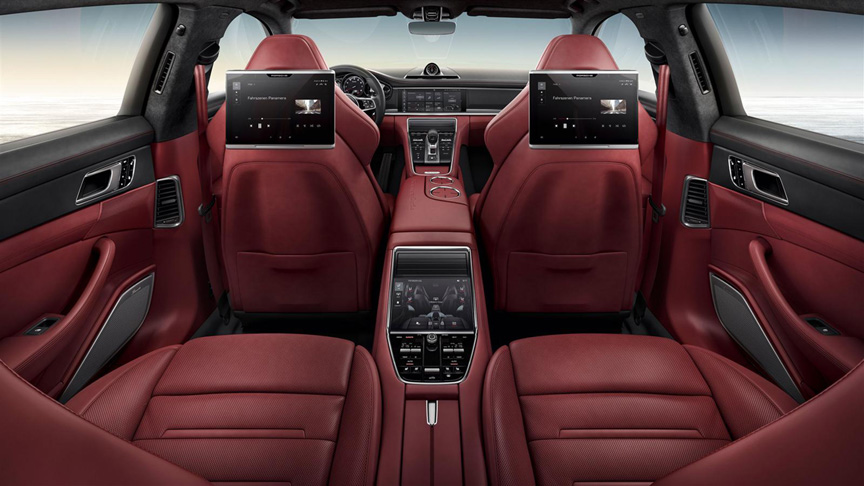
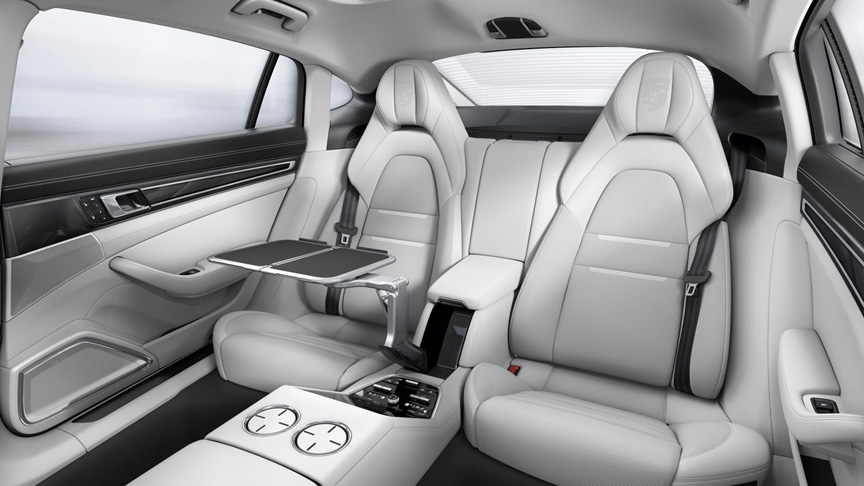
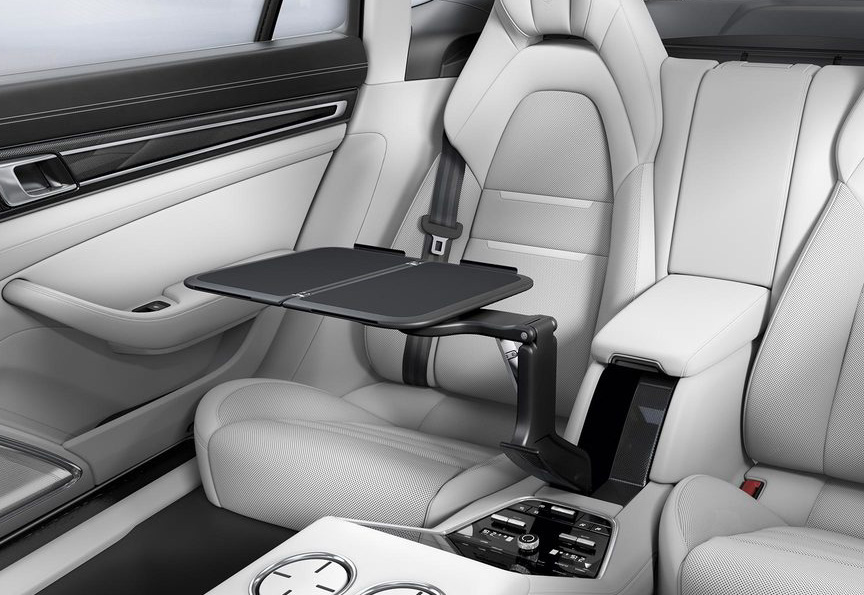
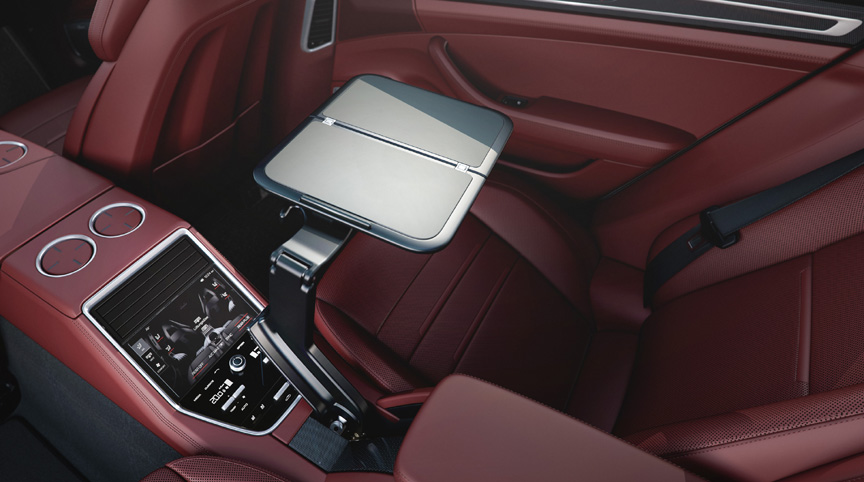
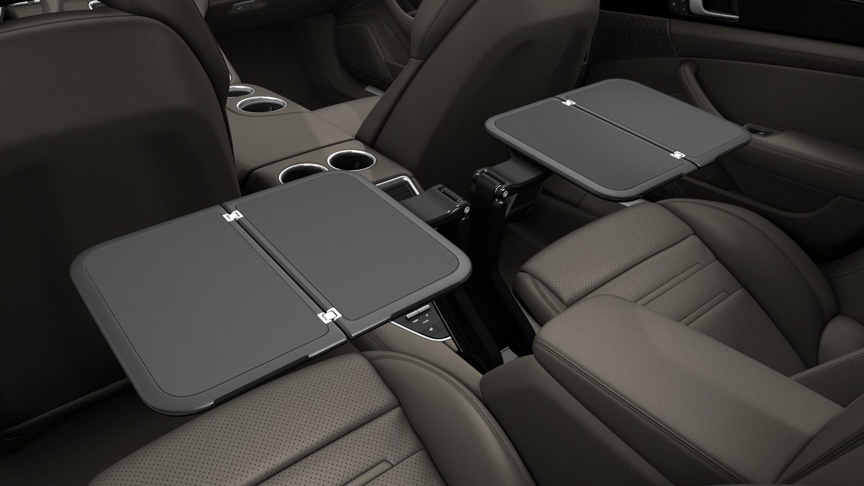
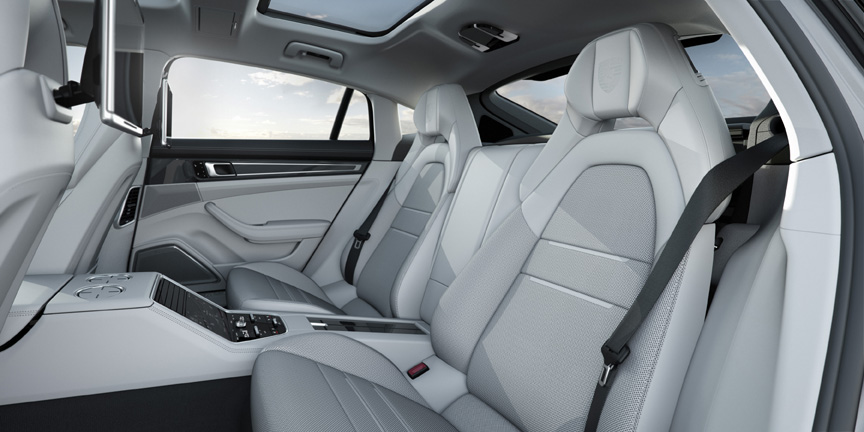
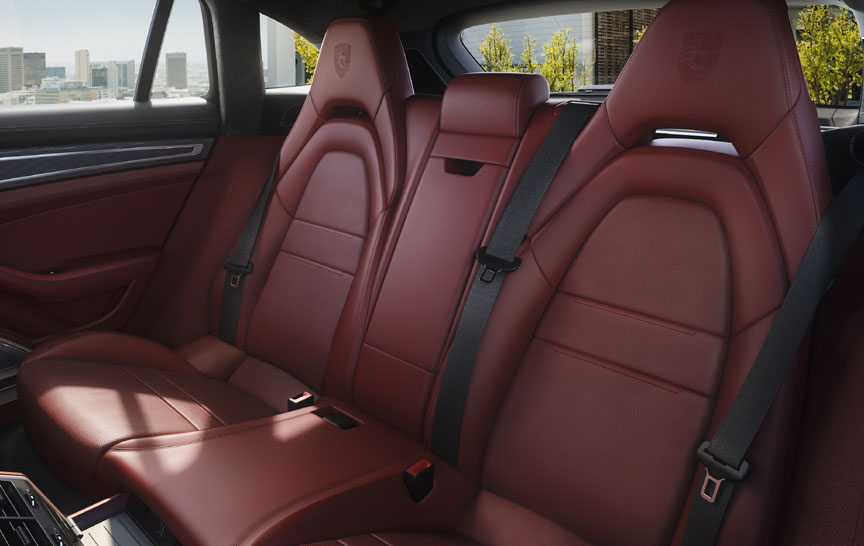
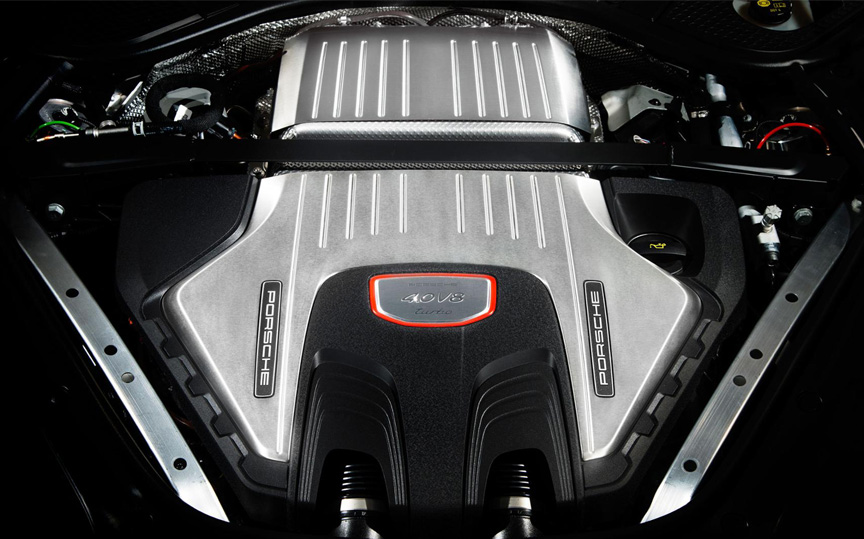
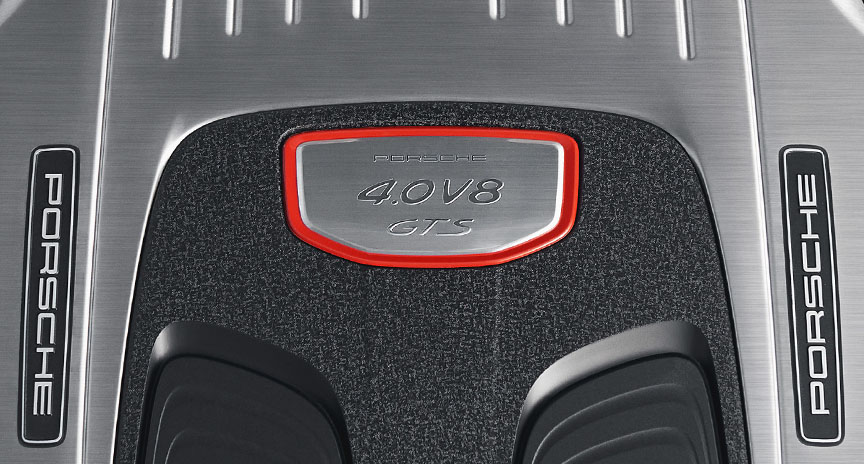
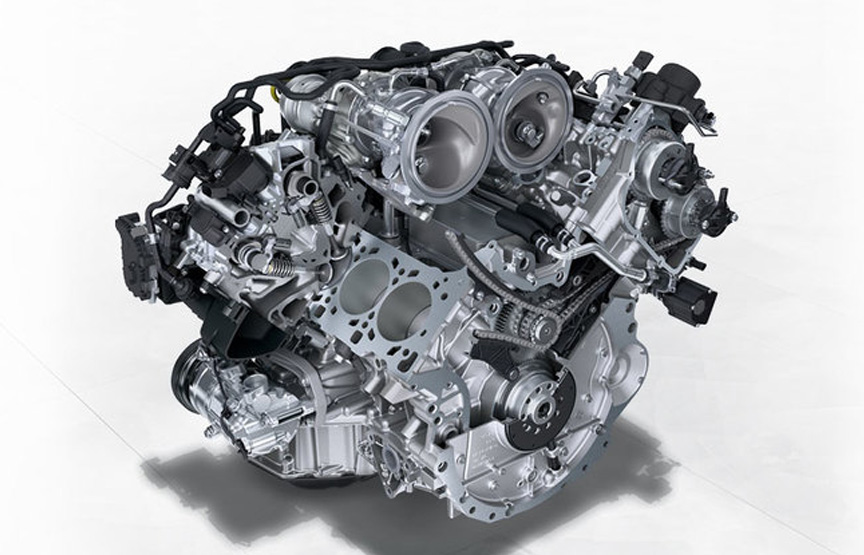
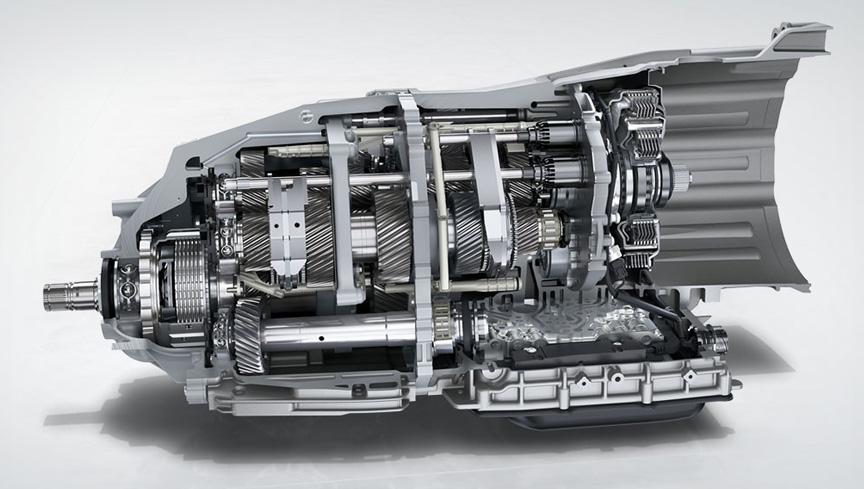
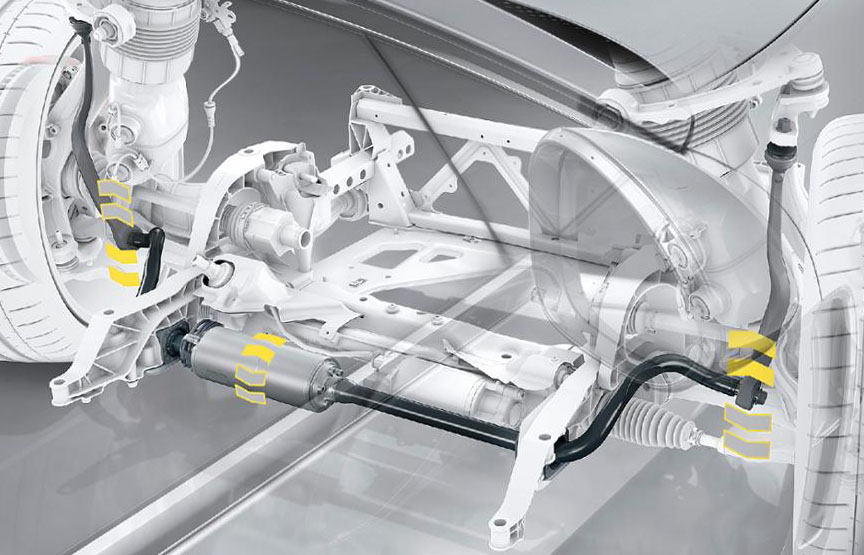
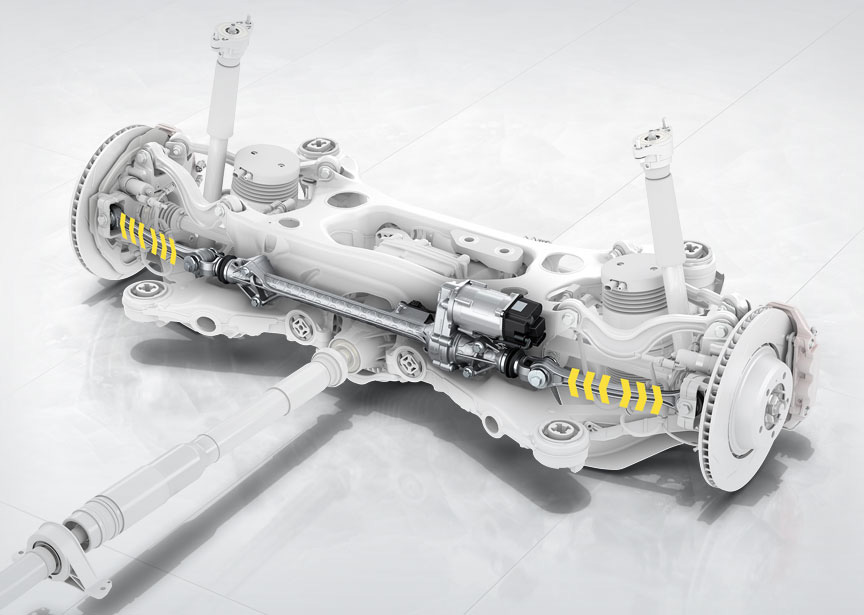
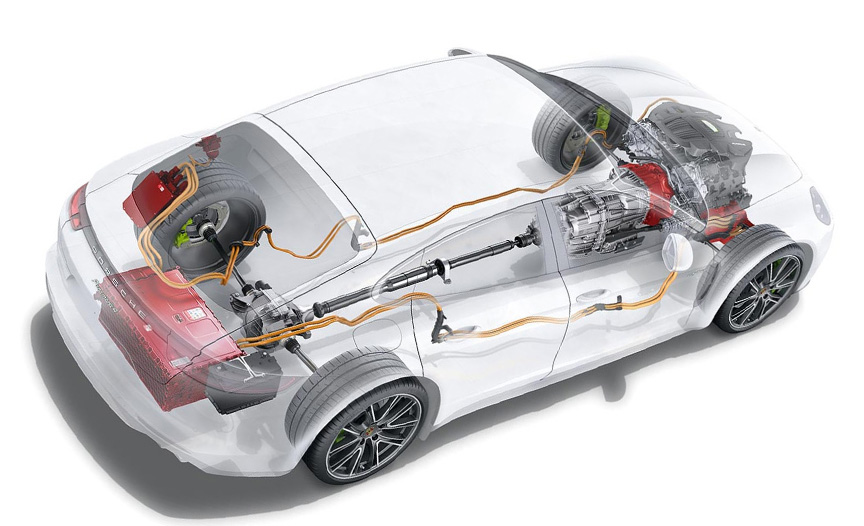
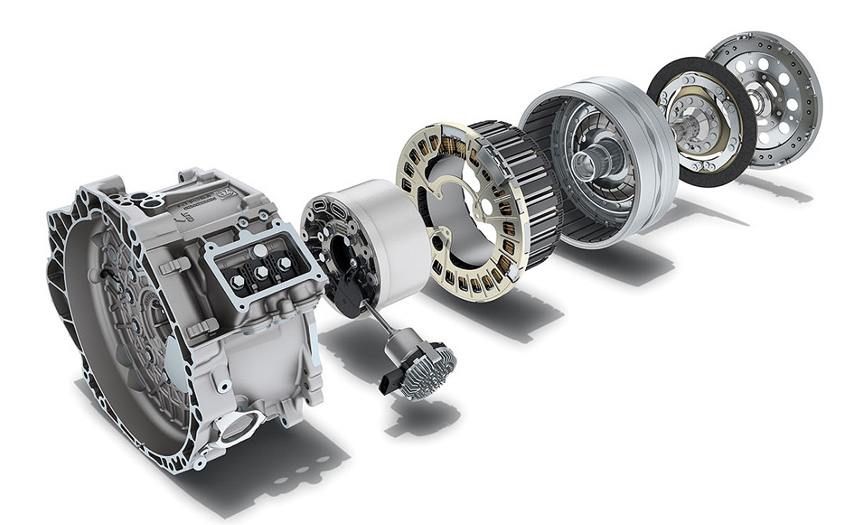
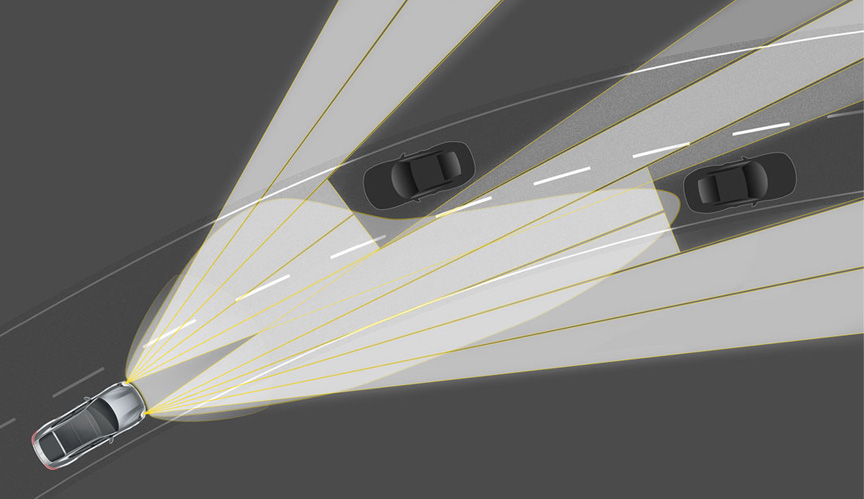


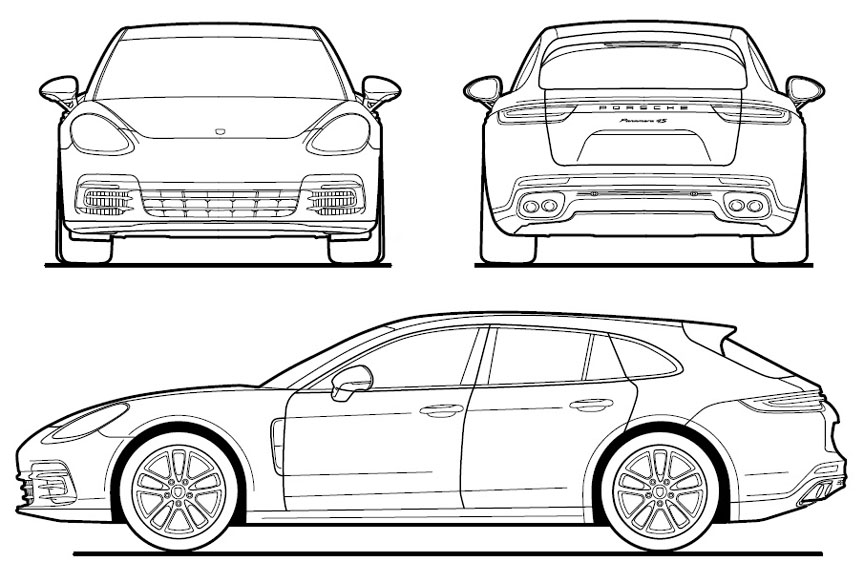
AutoBild’s 2017 best sports car
The readers of the German AutoBild magazine voted the Panamera Sport Turismo the best sports car of 2017 in front of Aston Martin DB11, Ferrari 812 Superfast, Ferrari GTC4 Lusso T, Honda NSX, Lamborghini Huracan Performante, Lexus LC 500 and McLaren 570S Spider. Although the 971-generation Panamera is a great daily driver, home-court advantage might have helped a bit.
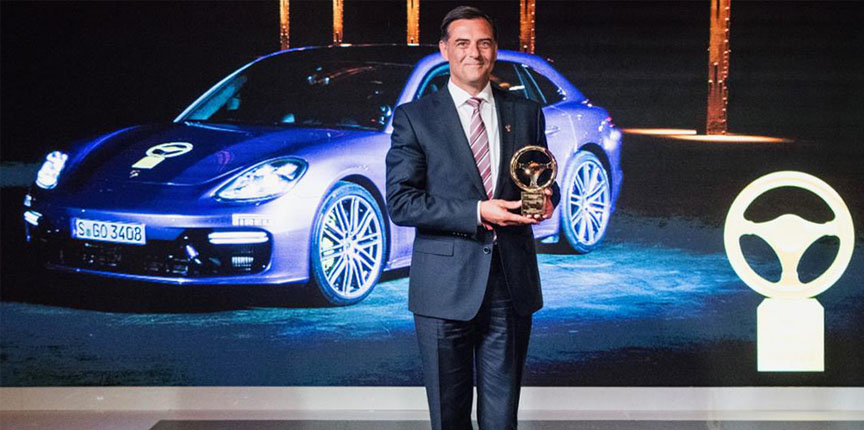
2016 and 2020 Nürburgring Nordschleife lap times
In the hands of Porsche test driver Lars Kern, the prototype of the 2017 model year Panamera Turbo 4.0 was able to lap the Nürburgring Nordschleife in June 2016 in just 7 minutes and 38 seconds (20.600 km lap configuration). The previous record for 4-door cars was from 2015 when Alfa Romeo Giulia Quadrifoglio (2.9V6 turbo 375 kW, 6-speed manual, 1555 kg DIN) did it in 7:39.
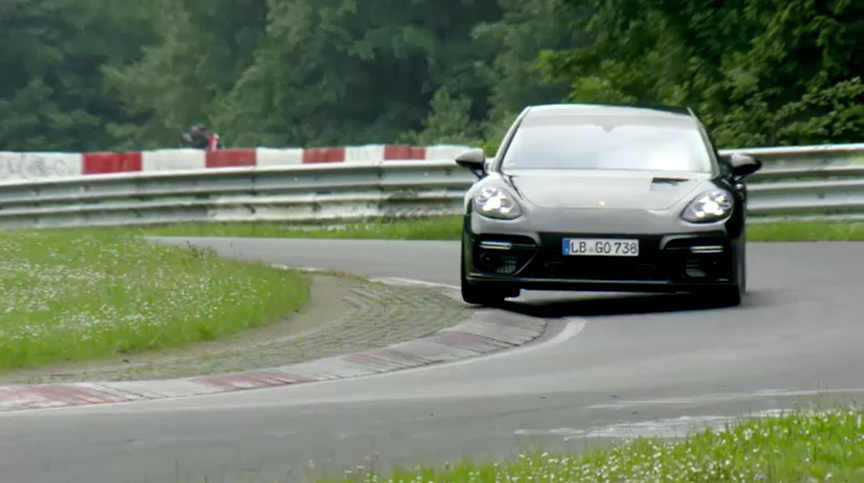
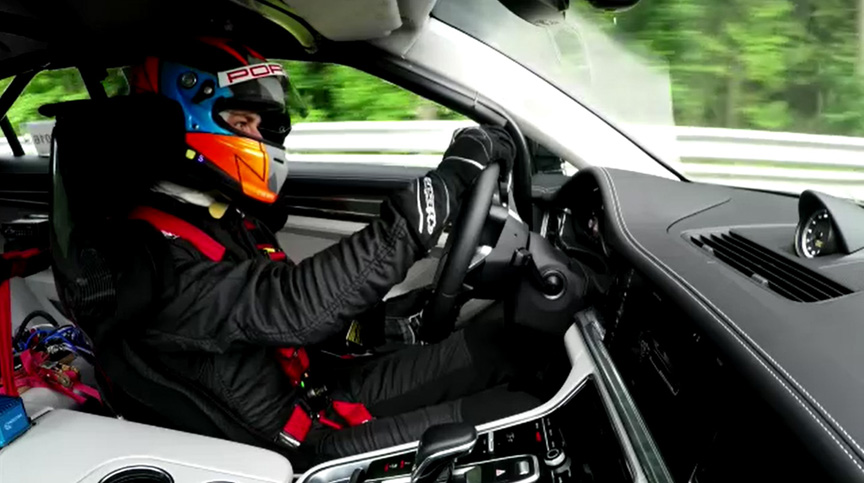
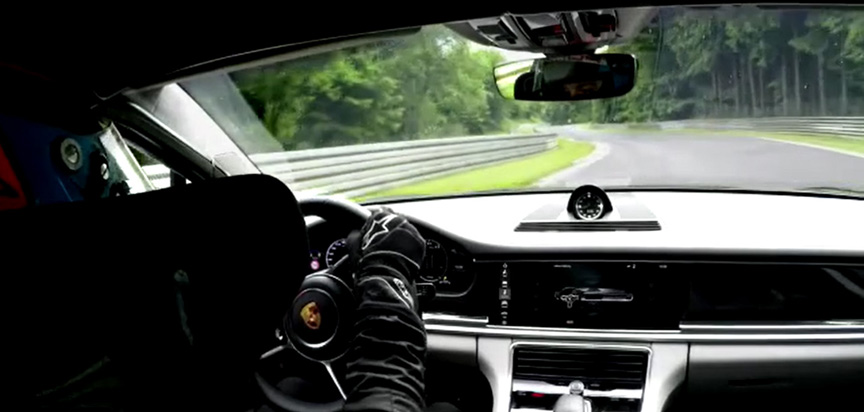
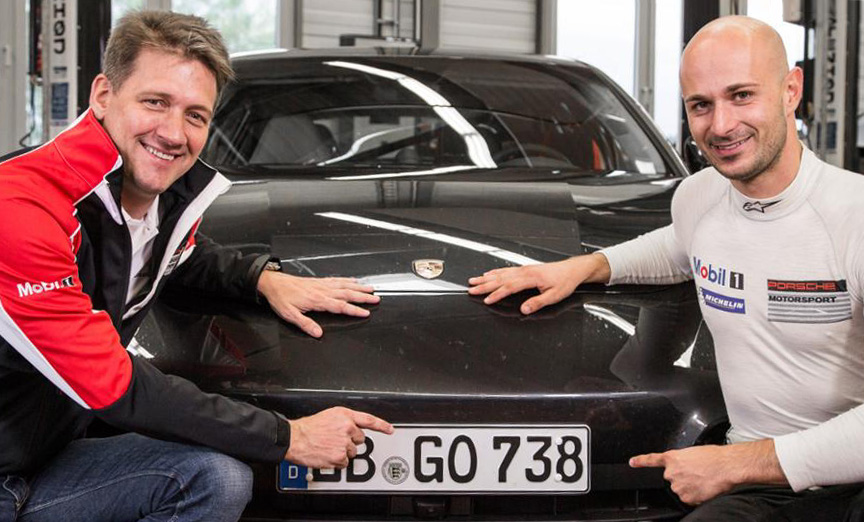
The record for 4-door cars didn’t stand long, though, as Alfa Romeo Giulia Quadrifoglio soon lapped it in 7:32. The record for street legal 4-door cars was bettered by Mercedes-AMG GT 63 S 4MATIC+ wth 7:25 in 2018 and by Jaguar XE SV Project 8 with two-seat Track Package with 7:23 in 2019. In 2020, Lars Kern took the 2021 model year non-hybrid Panamera Turbo S and lapped the “Ring” in 7:29. This was on the 20.832 km lap. He passed the 20.6 km mark after 7:25, so the non-hybrid Turbo S is 13 seconds faster than the earlier Turbo was.
A production ready Panamera Turbo S (non-hybrid) was fitted with Michelin Pilot Sport Cup 2 tyres, and for safety with roll cage and racing seat, to see how fast it can go around the Nürburgring Nordschleife. The non-hybrid Turbo S has 463 kW of power, so 59 kW more than on the “normal” Turbo 4.0 before and the maximum torque figure is 603 lb-ft/820 Nm, an increase of 36 lb-ft/50 Nm.
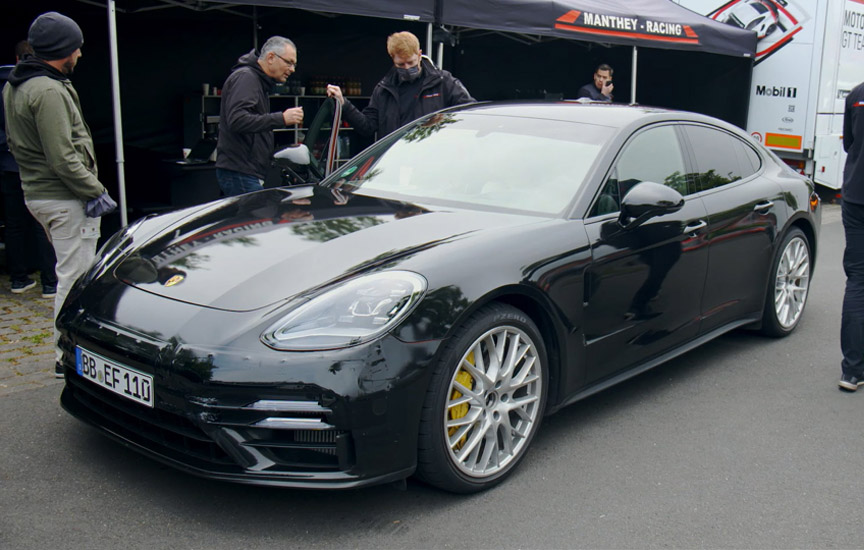
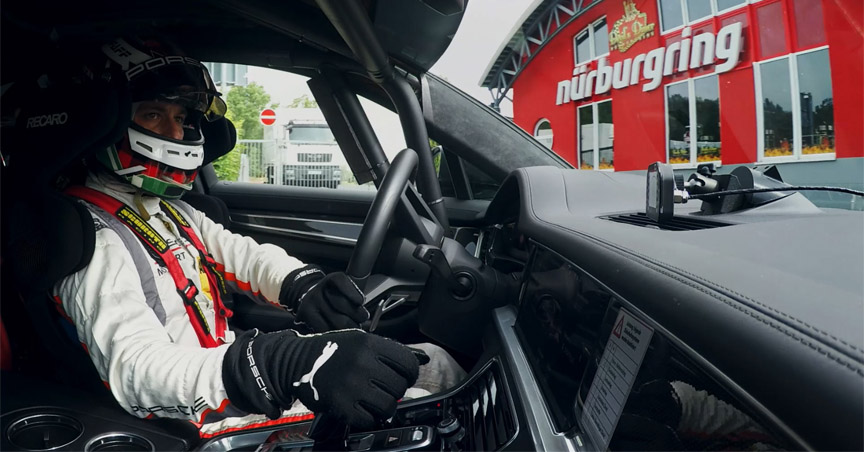
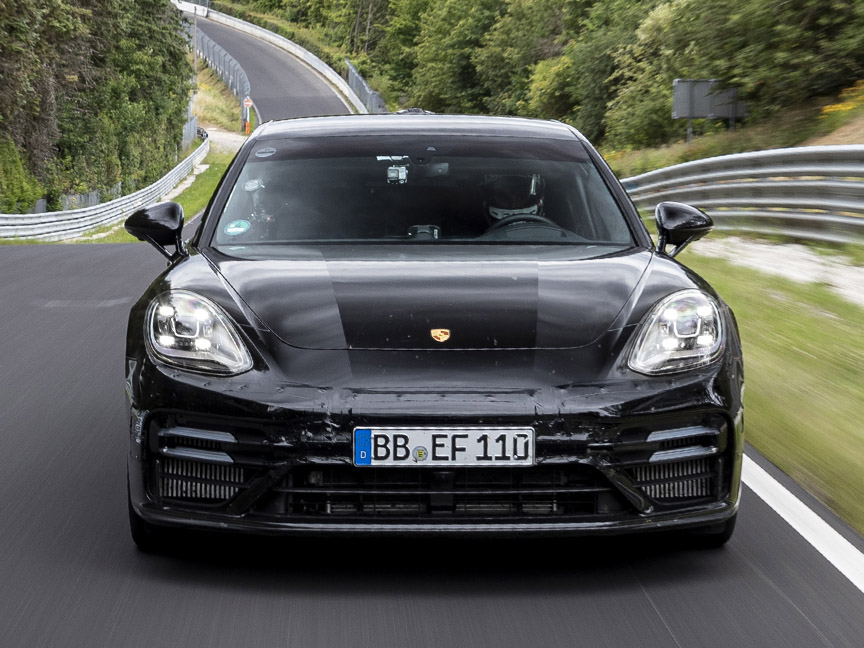
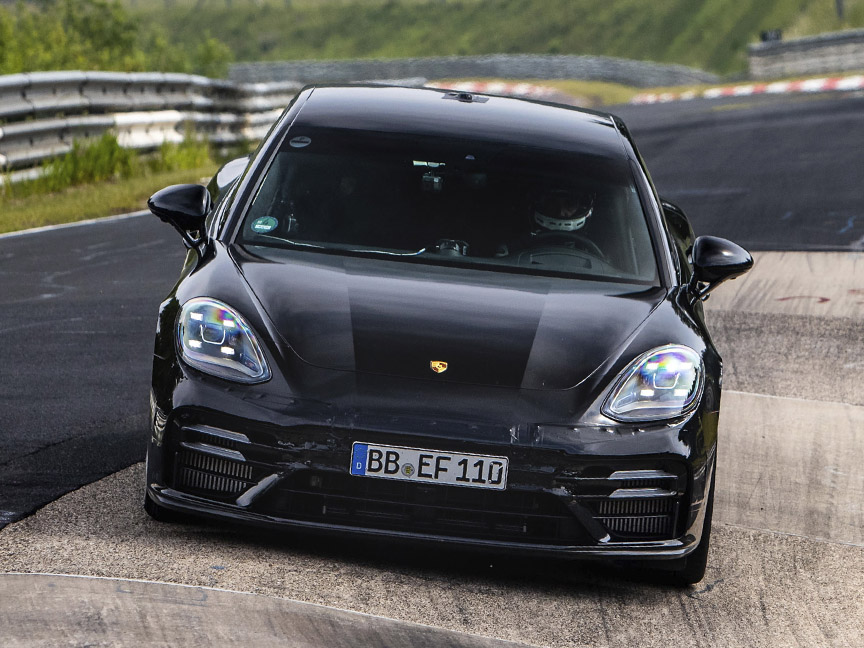
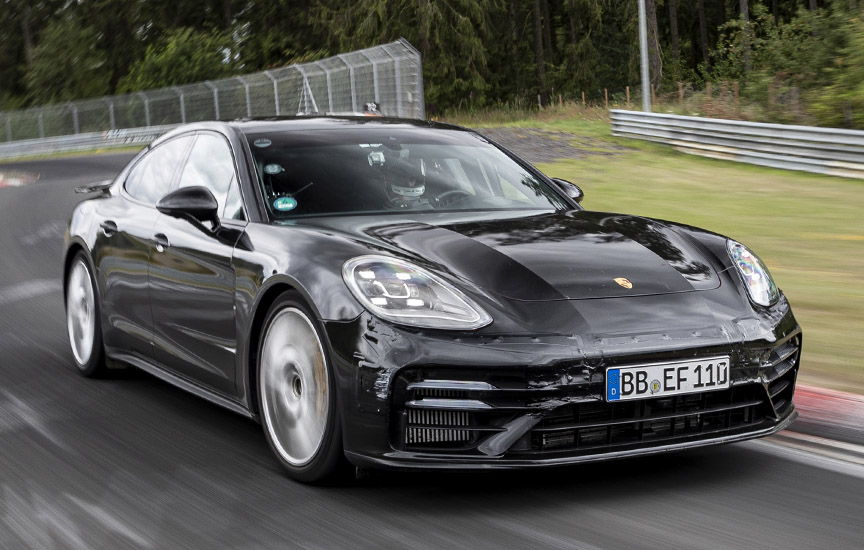
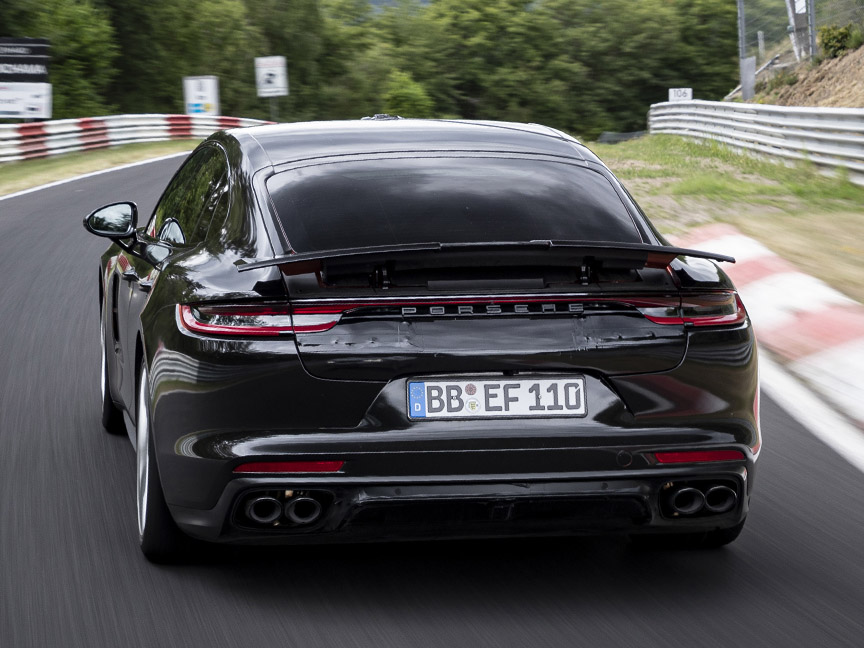
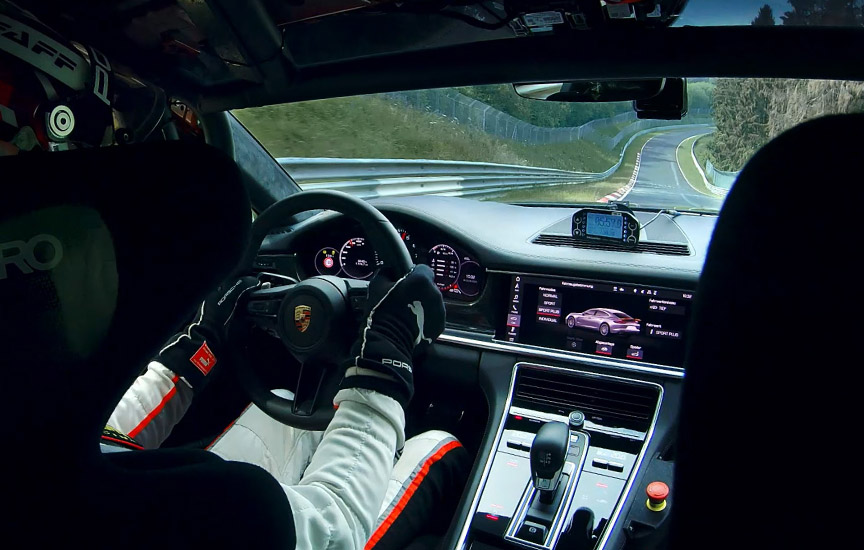
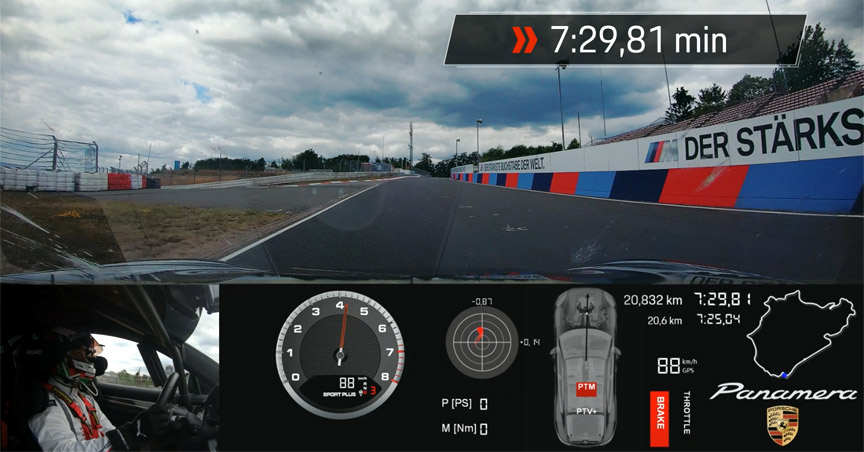
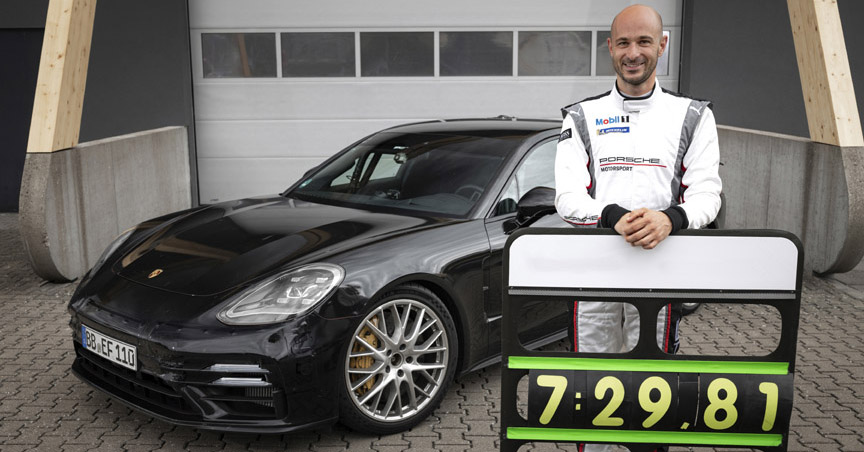
2021 model year changes
The 2021 model year update didn’t bring visual changes, and well so, the design was already perfect. The light strip on the rear lid has a bit different design. In addition to the Panamera 4 Hybrid, the 4S Hybrid was launched. The Turbo S Hybrid got more power, now 514 kW. A non-hybrid Turbo S was launched with 463 kW.
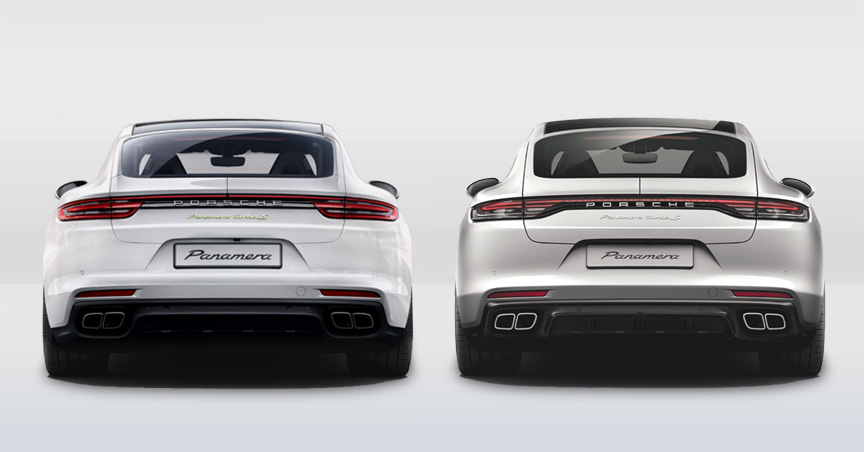
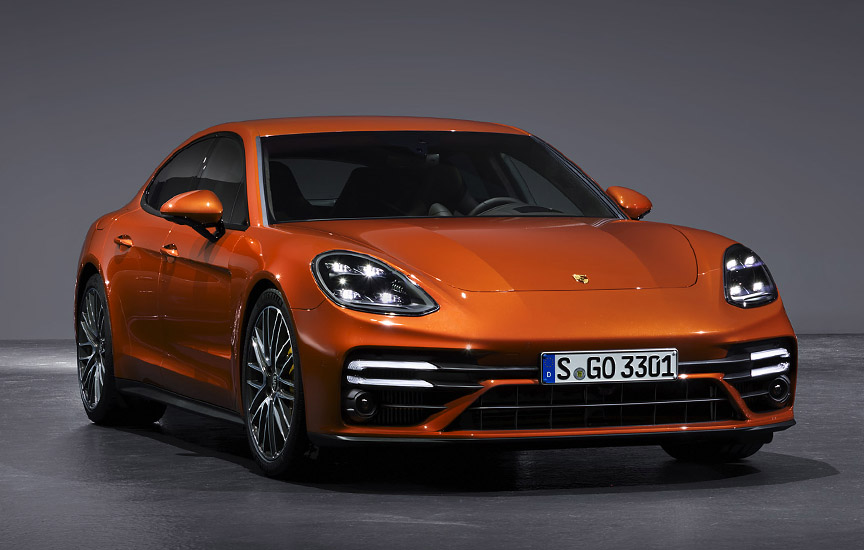
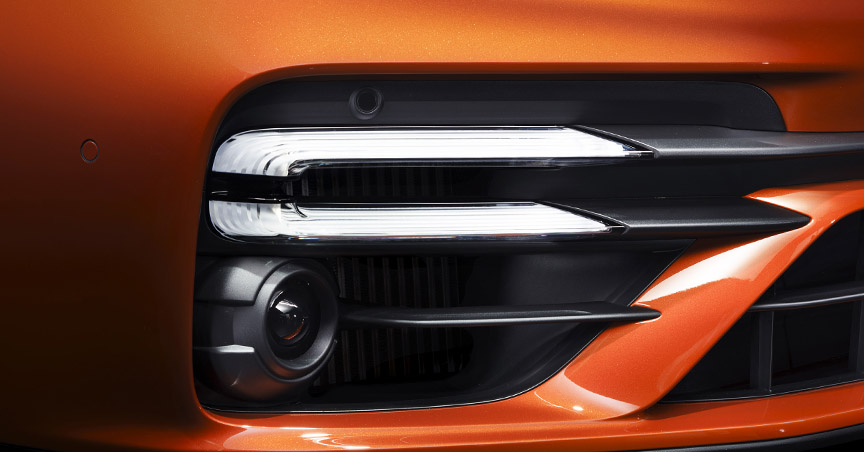

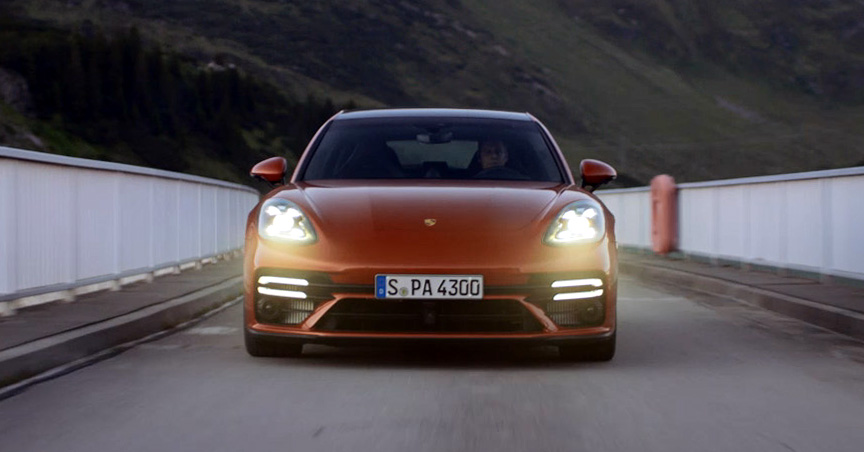
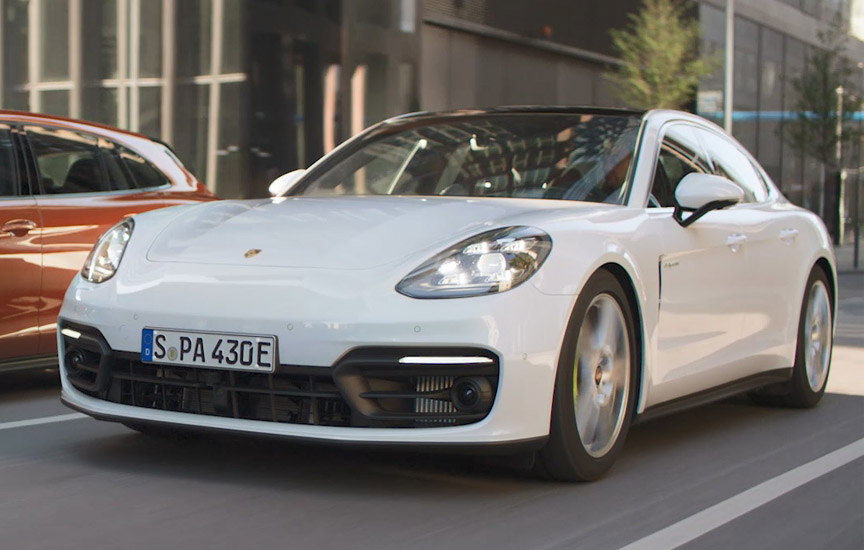
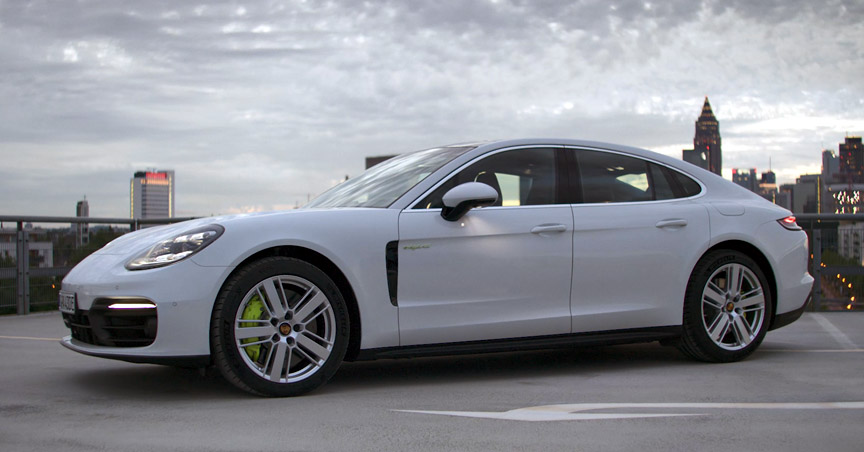
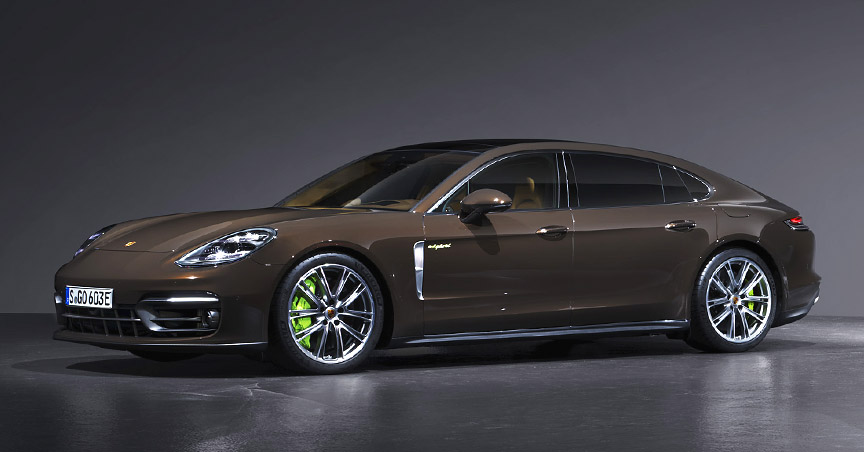
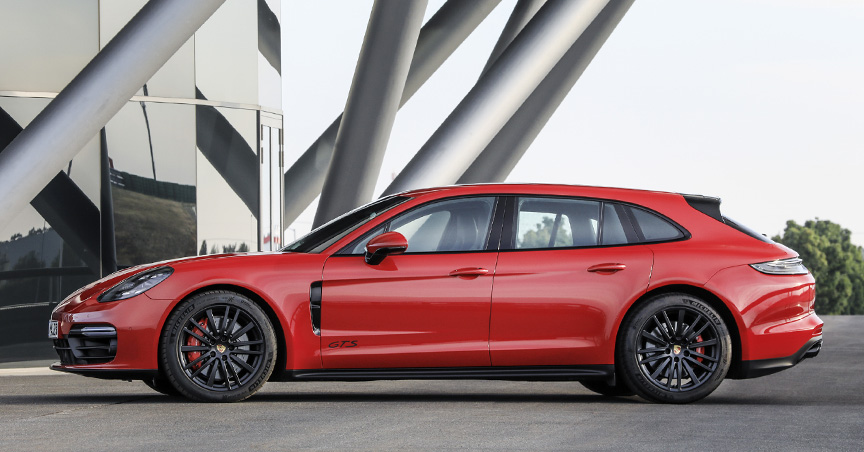
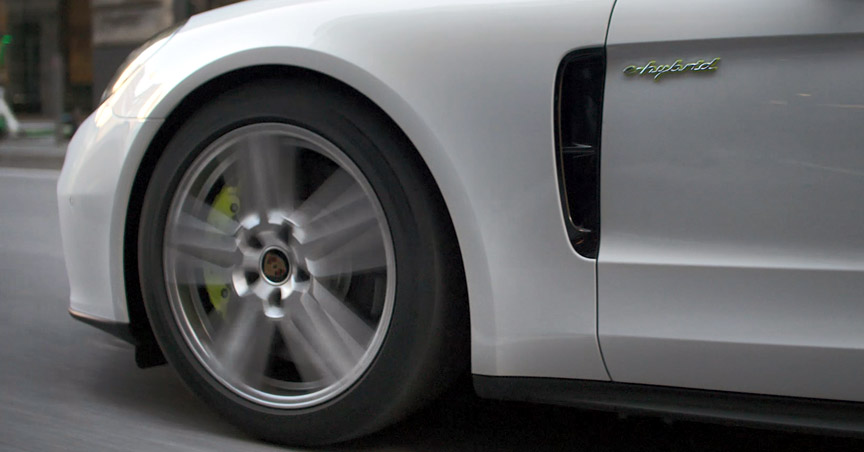
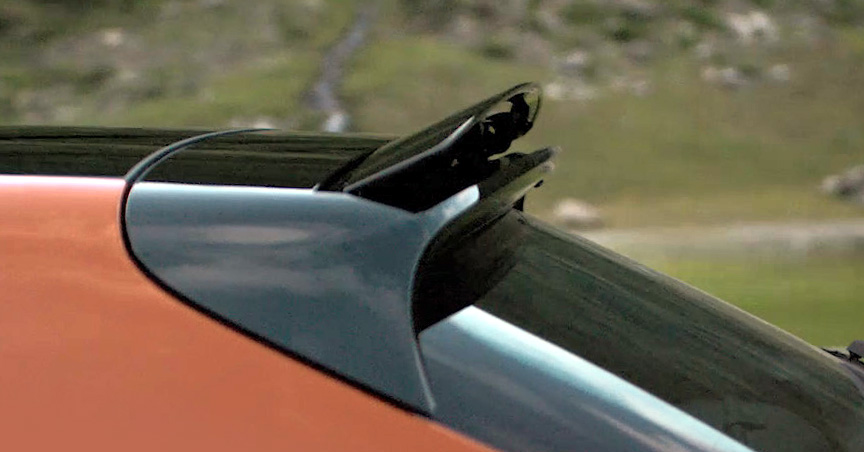
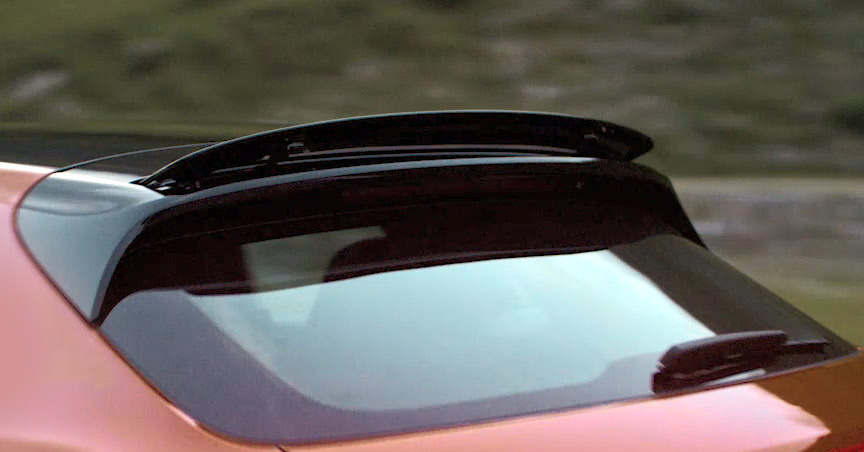
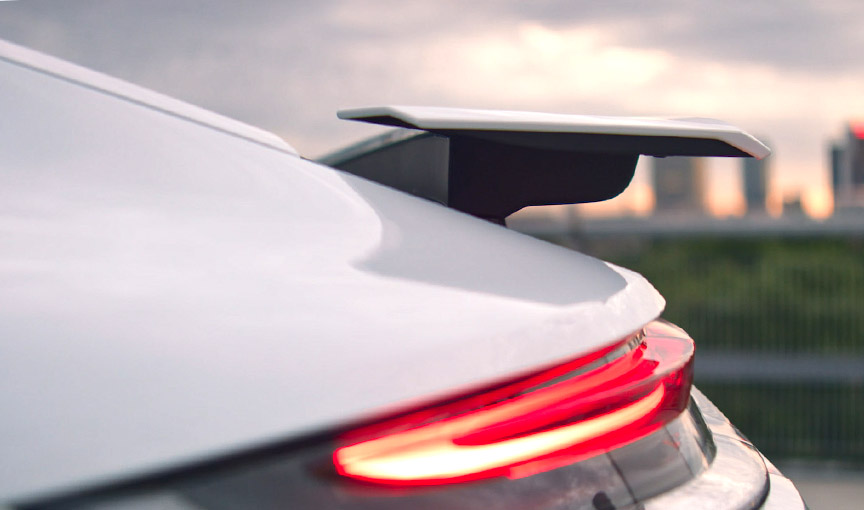
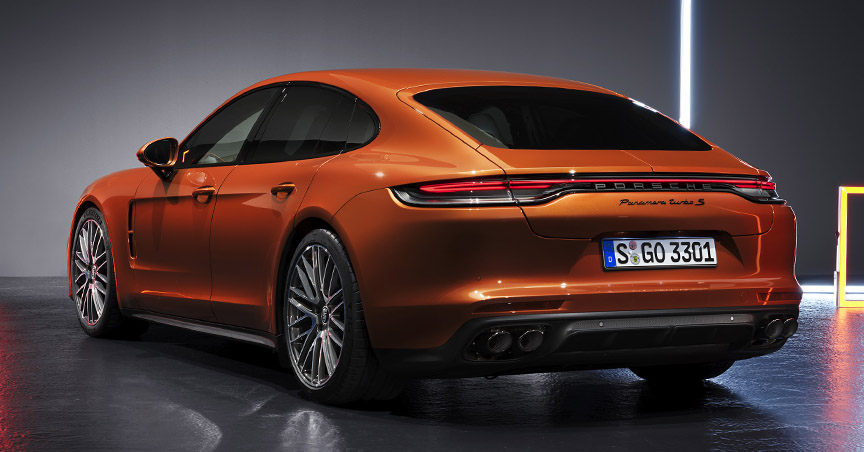
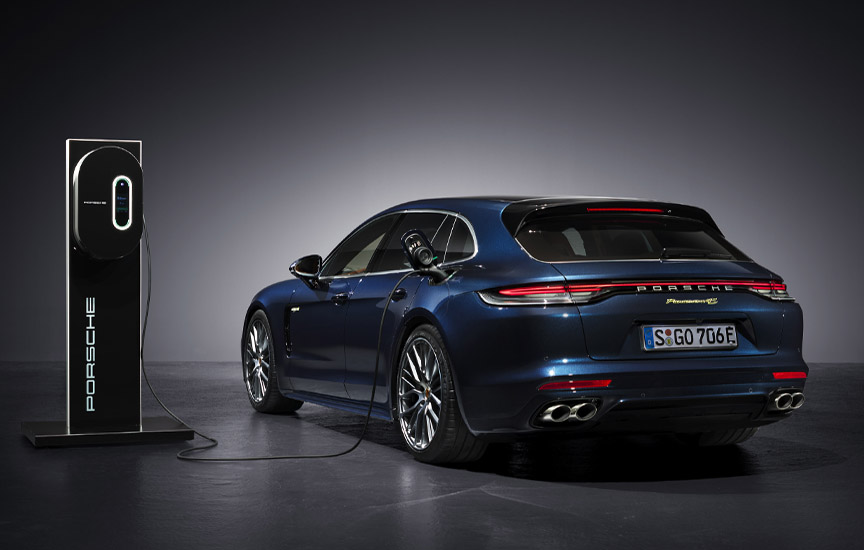
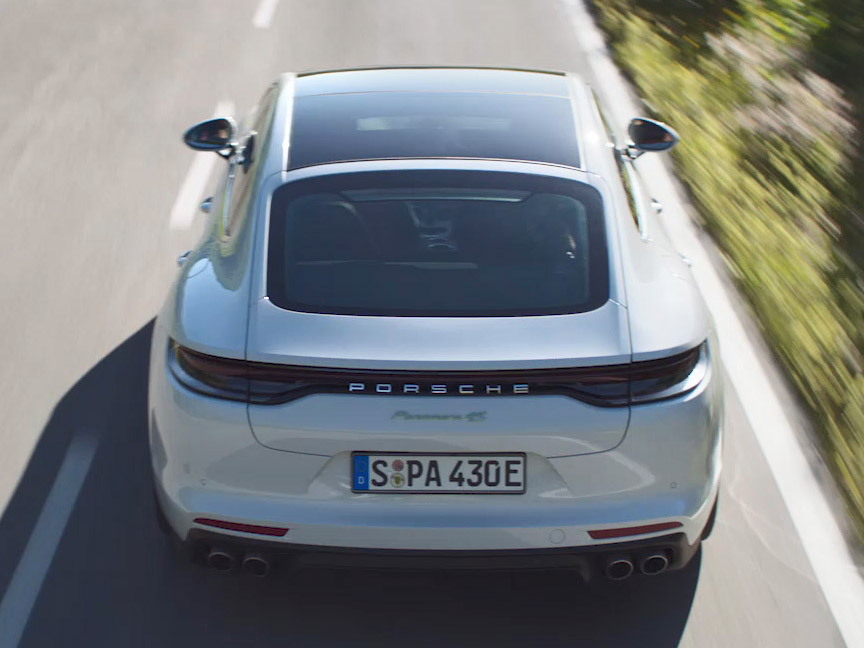

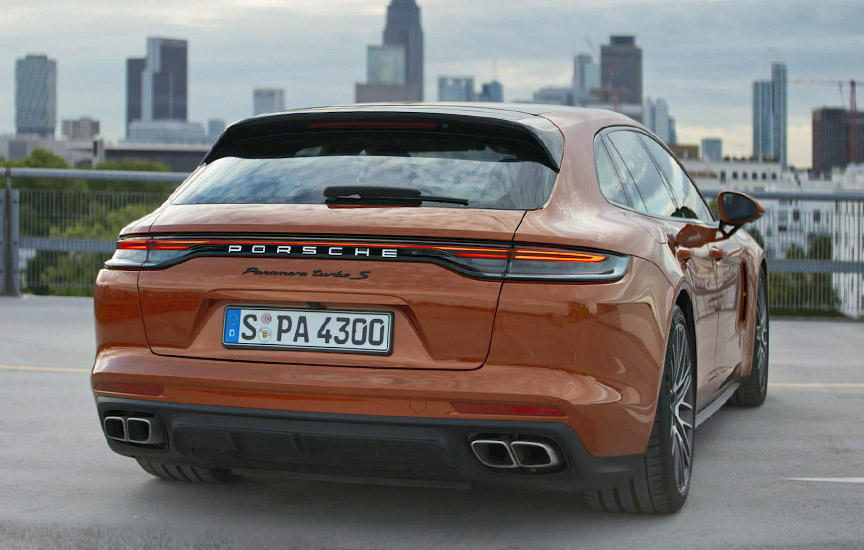
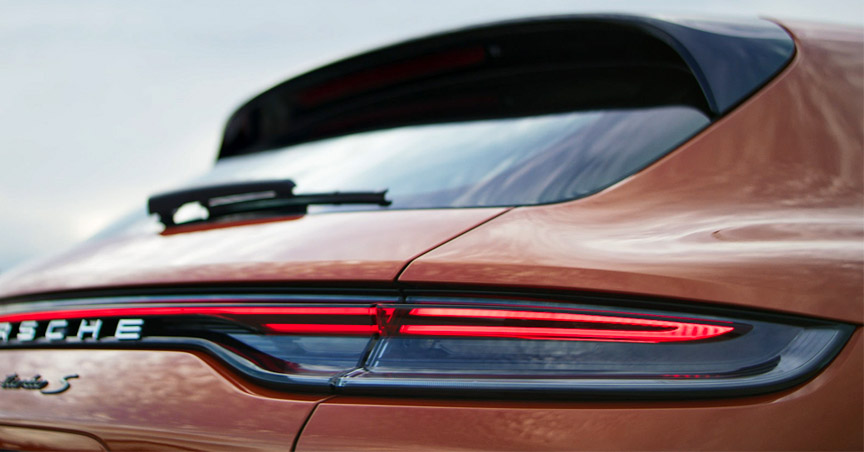
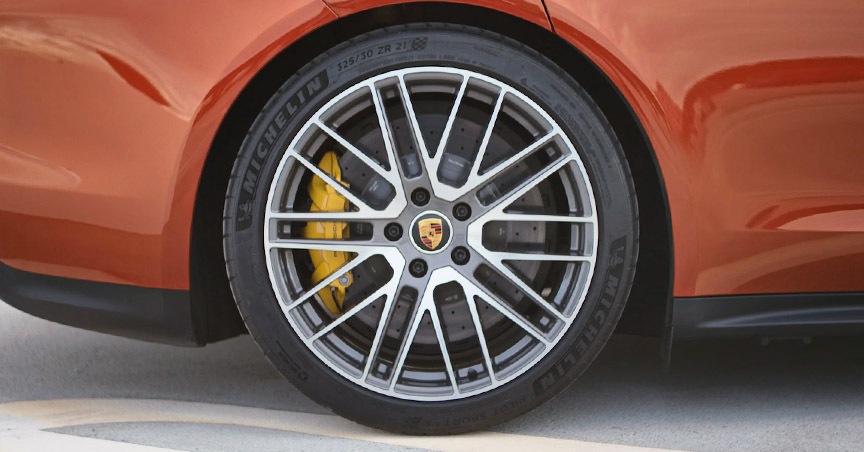
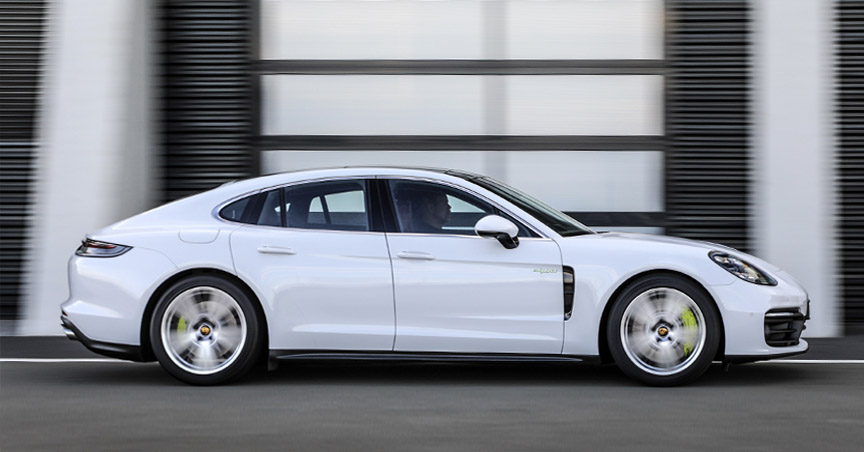
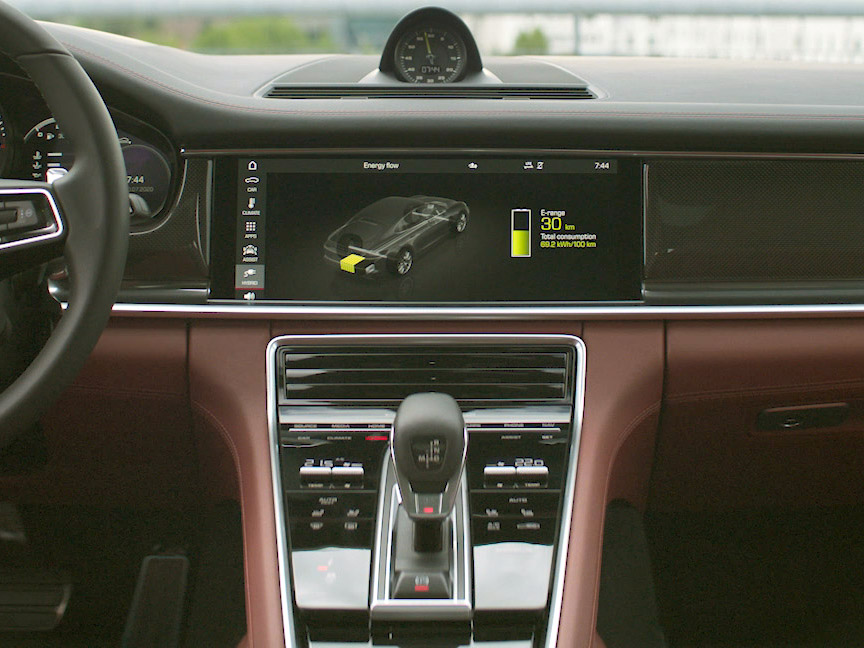
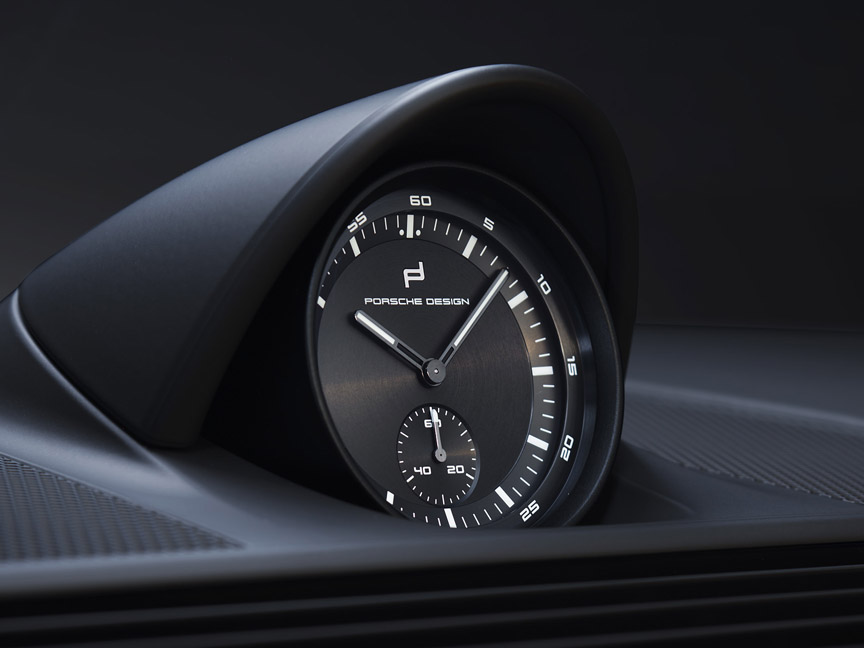
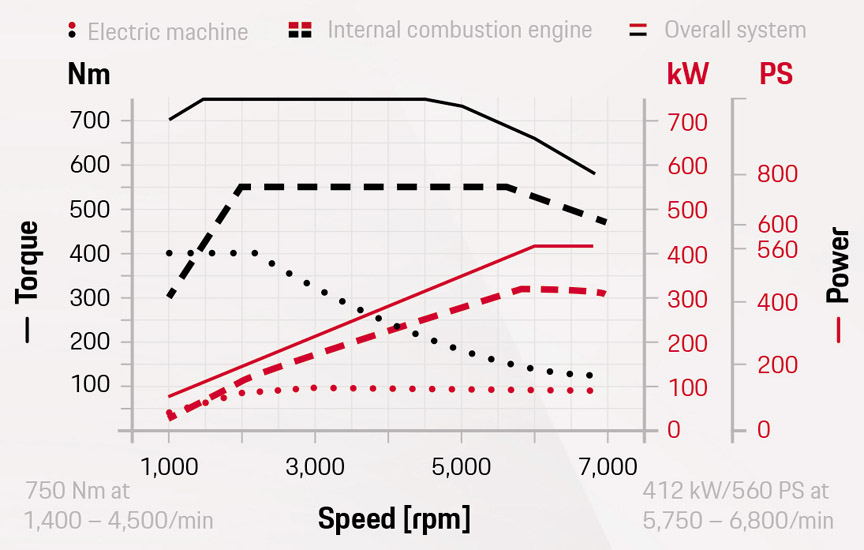
Technical specifications Panamera 971 short wheelbase sedan
| Modification | Gearbox | Drive | Engine | kW | lb-ft | Nm | 0-60 mph | 0-100 km/h | mph | km/h | DIN kg | DIN lb |
|---|---|---|---|---|---|---|---|---|---|---|---|---|
| Panamera Turbo 2.9 | PDK 8-speed | RWD | Audi V6 | 243 | 331 | 450 | 5.7/*5.5 sec. | 164 | 264 | 1815 | 4001 | |
| Panamera Turbo 3.0 | PDK 8-speed | RWD | Audi V6 | 243 | 330 | 449 | 5.4/*5.2 sec. | 164 | 264 | |||
| Panamera 4 Turbo 2.9 | PDK 8-speed | 4WD | Audi V6 | 243 | 331 | 450 | 5.5/*5.3 sec. | 163 | 262 | 1850 | 4079 | |
| Panamera 4 Turbo 3.0 | PDK 8-speed | 4WD | Audi V6 | 243 | 330 | 449 | 5.2/*5.0 sec. | 162 | 261 | |||
| Panamera 4 Turbo 2.9 Hybrid | PDK 8-speed | 4WD | Audi V6 243 kW el.motor 100 kW |
340 | 515 | 700 | *4.4 sec. | *4.6 sec. | 173 | 278 | 2170 | 4784 |
| Panamera 4S Diesel Turbo 4.0 | PDK 8-speed | 4WD | Audi V8 | 310 | 625 | 850 | 4.3/*4.1 sec. | 4.5/*4.3 sec. | 177 | 285 | 2050 | 4519 |
| Panamera 4S Turbo 2.9 | PDK 8-speed | 4WD | Audi V6 | 324 | 404 | 550 | 4.2/*4.0 sec. | 4.4/*4.2 sec. | 180 | 289 | 1870 | 4122 |
| Panamera GTS Turbo 4.0 338 kW | PDK 8-speed | 4WD | Audi-Porsche V8 | 338 | 456 | 620 | *3.9 sec. | *4.1 sec. | 181 | 292 | 1995 | 4398 |
| Panamera GTS Turbo 4.0 353 kW | PDK 8-speed | 4WD | Audi-Porsche V8 | 353 | 456 | 620 | *3.7 sec. | *3.9 sec. | 186 | 300 | 2020 | 4453 |
| Panamera 4S Turbo 2.9 Hybrid | PDK 8-speed | 4WD | Audi V6 324 kW el.motor 100 kW |
412 | 551 | 750 | *3.5 sec. | *3.7 sec. | 185 | 298 | 2225 | 4905 |
| Panamera Turbo 4.0 | PDK 8-speed | 4WD | Audi-Porsche V8 | 404 | 566 | 770 | 3.6/*3.4 sec. | 3.8/*3.6 sec. | 190 | 306 | 1995 | 4398 |
| Panamera Turbo S 4.0 Hybrid 500 kW | PDK 8-speed | 4WD | Audi-Porsche V8 404 kW el.motor 100 kW |
500 | 625 | 850 | *3.2 sec. | *3.4 sec. | 193 | 310 | 2310 | 5093 |
| Panamera Turbo S 4.0 Hybrid 514 kW | PDK 8-speed | 4WD | Audi-Porsche V8 420 kW el.motor 100 kW |
514 | *3.0 sec. | *3.2 sec. | 196 | 315 | ||||
| Panamera Turbo S 4.0 | PDK 8-speed | 4WD | Audi-Porsche V8 | 463 | 603 | 820 | *2.9 sec. | *3.1 sec. | 196 | 315 | 2080 | 4586 |
Technical specifications Panamera 971 “Executive” long wheelbase (LWB) sedan
| Modification | Gearbox | Drive | Engine | kW | lb-ft | Nm | 0-60 mph | 0-100 km/h | mph | km/h | DIN kg | DIN lb |
|---|---|---|---|---|---|---|---|---|---|---|---|---|
| Panamera Turbo 2.9 LWB (China) | PDK 8-speed | RWD | Audi V6 | 243 | 331 | 450 | 5.5/*5.3 sec. | 5.8/*5.6 sec. | 164 | 264 | 1954 | 4308 |
| Panamera 4 Turbo 2.9 LWB | PDK 8-speed | 4WD | Audi V6 | 243 | 331 | 450 | 5.6/*5.4 sec. | 163 | 262 | 1935 | 4266 | |
| Panamera 4 Turbo 3.0 LWB | PDK 8-speed | 4WD | Audi V6 | 243 | 330 | 449 | 5.3/*5.1 sec. | 162 | 261 | |||
| Panamera 4 Turbo 2.9 Hybrid LWB | PDK 8-speed | 4WD | Audi V6 243 kW el.motor 100 kW |
340 | 515 | 700 | *4.5 sec. | *4.7 sec. | 173 | 278 | 2250 | 4960 |
| Panamera 4S Turbo 2.9 LWB | PDK 8-speed | 4WD | Audi V6 | 324 | 404 | 550 | 4.3/*4.1 sec. | 4.5/*4.3 sec. | 180 | 289 | 1980 | 4365 |
| Panamera 4S Turbo 2.9 Hybrid LWB | PDK 8-speed | 4WD | Audi V6 324 kW el.motor 100 kW |
412 | 551 | 750 | *3.6 sec. | *3.8 sec. | 185 | 298 | 2330 | 5137 |
| Panamera Turbo 4.0 LWB | PDK 8-speed | 4WD | Audi-Porsche V8 | 404 | 566 | 770 | 3.7/*3.5 sec. | 3.9/*3.7 sec. | 190 | 306 | 2100 | 4630 |
| Panamera Turbo S 4.0 Hybrid LWB 500 kW | PDK 8-speed | 4WD | Audi-Porsche V8 404 kW el.motor 100 kW |
500 | 625 | 850 | *3.3 sec. | *3.5 sec. | 193 | 310 | 2410 | 5313 |
| Panamera Turbo S 4.0 Hybrid LWB 514 kW | PDK 8-speed | 4WD | Audi-Porsche V8 420 kW el.motor 100 kW |
514 | *3.1 sec. | *3.3 sec. | 196 | 315 | ||||
| Panamera Turbo S 4.0 LWB | PDK 8-speed | 4WD | Audi-Porsche V8 | 463 | 603 | 820 | *3.0 sec. | *3.2 sec. | 196 | 315 | 2185 | 4817 |
Technical specifications Panamera 971 Sport Turismo (ST) wagon
| Modification | Gearbox | Drive | Engine | kW | lb-ft | Nm | 0-60 mph | 0-100 km/h | mph | km/h | DIN kg | DIN lb |
|---|---|---|---|---|---|---|---|---|---|---|---|---|
| Panamera 4 Turbo 2.9 ST | PDK 8-speed | 4WD | Audi V6 | 243 | 331 | 450 | 5.5/*5.3 sec. | 161 | 259 | 1880 | 4145 | |
| Panamera 4 Turbo 3.0 ST | PDK 8-speed | 4WD | Audi V6 | 243 | 330 | 449 | 5.2/*5.0 sec. | 160 | 258 | |||
| Panamera 4 Turbo 2.9 Hybrid ST | PDK 8-speed | 4WD | Audi V6 243 kW el.motor 100 kW |
340 | 515 | 700 | *4.4 sec. | *4.6 sec. | 171 | 275 | 2190 | 4828 |
| Panamera 4S Diesel Turbo 4.0 ST** | PDK 8-speed | 4WD | Audi V8 | 310 | 625 | 850 | 4.3/*4.1 sec. | 4.5/*4.3 sec. | 175 | 282 | 2095 | 4619 |
| Panamera 4S Turbo 2.9 ST | PDK 8-speed | 4WD | Audi V6 | 324 | 404 | 550 | 4.2/*4.0 sec. | 4.4/*4.2 sec. | 178 | 286 | 1915 | 4222 |
| Panamera GTS Turbo 4.0 ST 338 kW | PDK 8-speed | 4WD | Audi-Porsche V8 | 338 | 456 | 620 | *3.9 sec. | *4.1 sec. | 180 | 289 | 2025 | 4464 |
| Panamera GTS Turbo 4.0 ST 353 kW | PDK 8-speed | 4WD | Audi-Porsche V8 | 353 | 456 | 620 | *3.7 sec. | *3.9 sec. | 181 | 292 | 2040 | 4497 |
| Panamera 4S Turbo 2.9 Hybrid ST | PDK 8-speed | 4WD | Audi V6 324 kW el.motor 100 kW |
412 | 551 | 750 | *3.5 sec. | *3.7 sec. | 182 | 293 | 2240 | 4938 |
| Panamera Turbo 4.0 ST | PDK 8-speed | 4WD | Audi-Porsche V8 | 404 | 566 | 770 | 3.6/*3.4 sec. | 3.8/*3.6 sec. | 189 | 304 | 2035 | 4486 |
| Panamera Turbo S 4.0 Hybrid ST 500 kW | PDK 8-speed | 4WD | Audi-Porsche V8 404 kW el.motor 100 kW |
500 | 625 | 850 | *3.2 sec. | *3.4 sec. | 193 | 310 | 2325 | 5126 |
| Panamera Turbo S 4.0 Hybrid ST 514 kW | PDK 8-speed | 4WD | Audi-Porsche V8 420 kW el.motor 100 kW |
514 | *3.0 sec. | *3.2 sec. | 196 | 315 | ||||
| Panamera Turbo S 4.0 ST | PDK 8-speed | 4WD | Audi-Porsche V8 | 463 | 603 | 820 | *2.9 sec. | *3.1 sec. | 196 | 315 | 2135 | 4707 |
* Sport Chrono Pack/Launch Control
** Was initally announced, but production was terminated after press cars
Weight of German versions with standard equipment. DIN weight = car with 90% fuel, no driver, no cargo.


